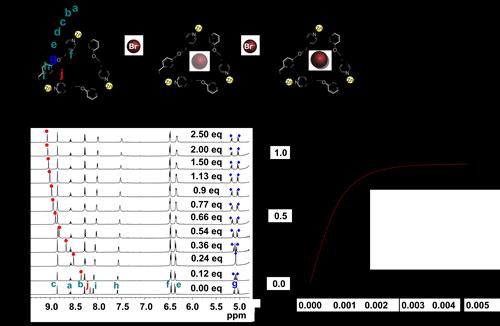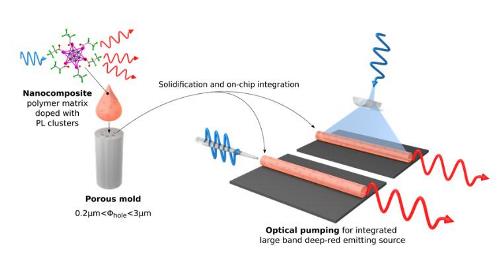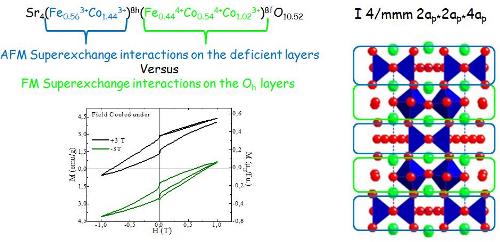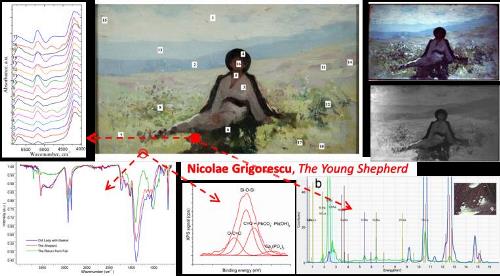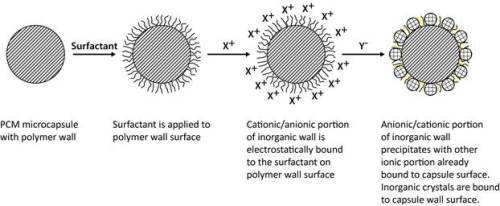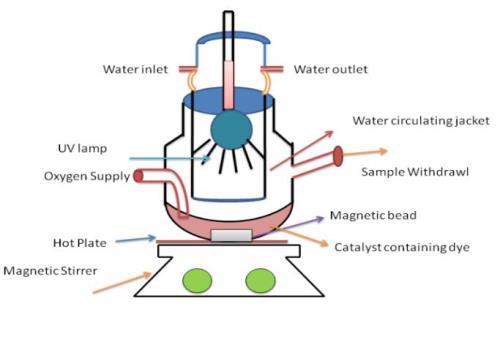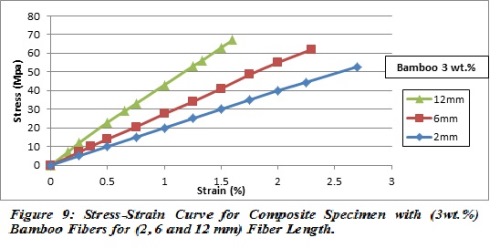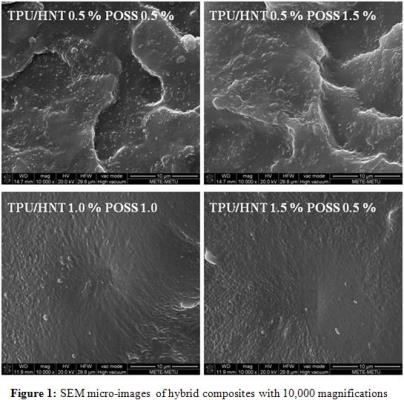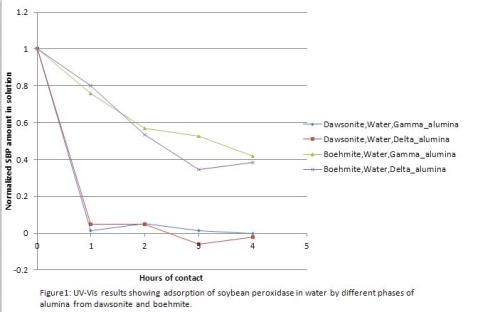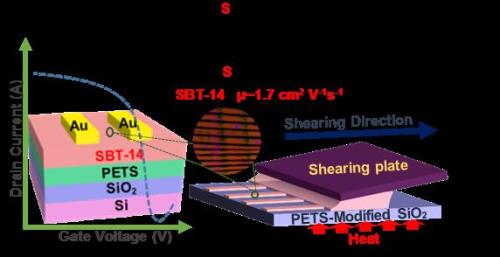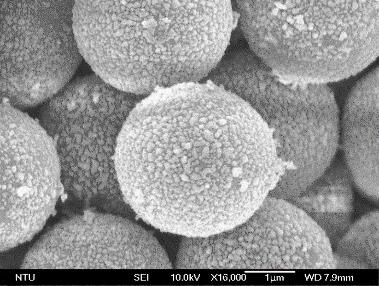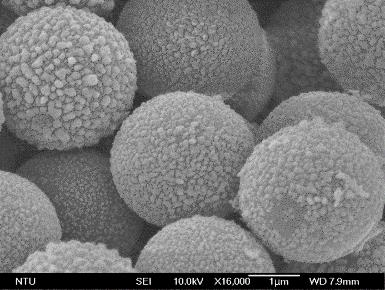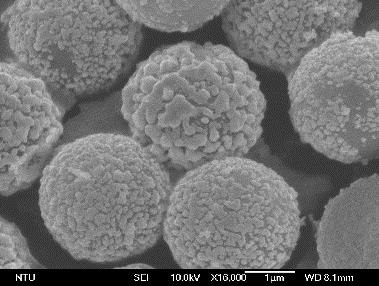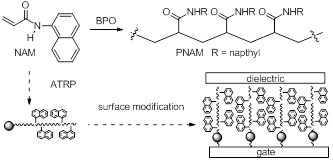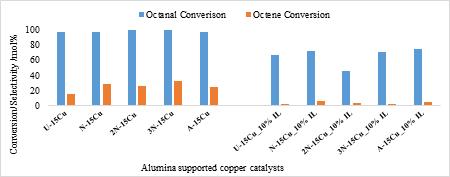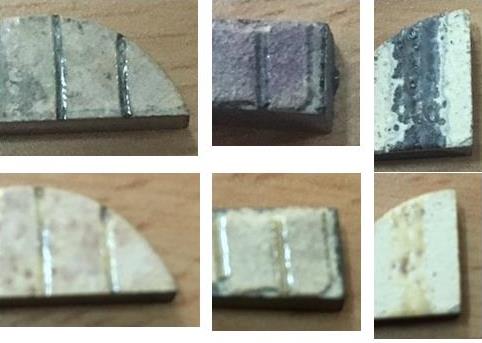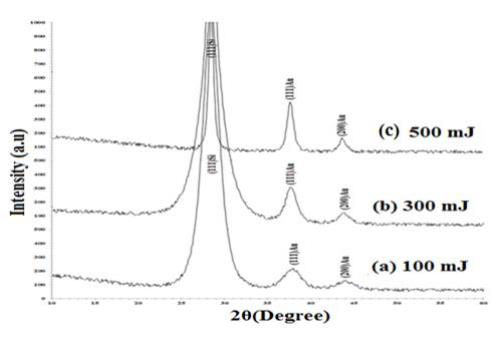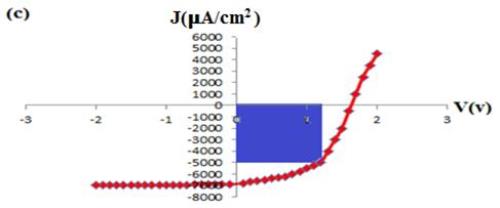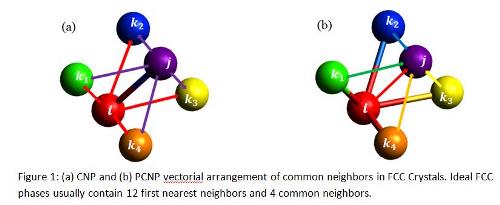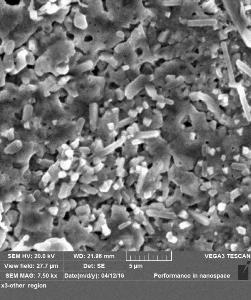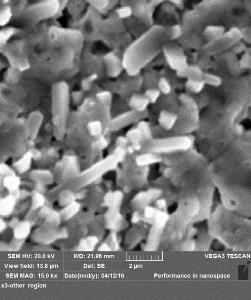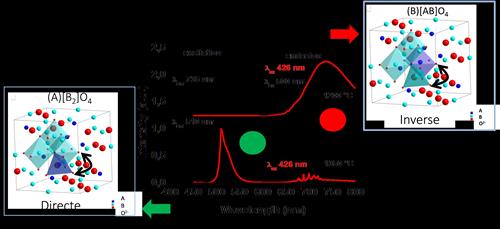Day 1 :
Keynote Forum
Ian S Butler
McGill University, Canada
Keynote: Selected applications of molecular spectroscopy in cultural heritage studies
Time : 09:30-10:00

Biography:
Ian S Butler has been working at McGill University; he has served as the Department Chair and Associate Vice-Principal. He is an honorary member of the Spectroscopy Society of Canada, a fellow of both the Chemical Institute of Canada and the Royal Society of Chemistry. He has supervised about 200 researchers, resulting in the co-authorship of about 540 publications. His honors include the Gerhard Herzberg Award for Excellence in Spectroscopy and the David Thomson Award for Excellence in Graduate Teaching and Supervision. His current research focuses on structural changes induced by high pressures and variable temperatures, biomass conversion, mechanochemistry and art forensics.
To present & exhibit your MATERIALS @ our upcoming series PS: Materials Conferences | Materials Chemistry Conferences | Materials Chemistry 2020
Abstract:
Throughout the world, considerable effort is being expended in identifying and preserving objects of national cultural heritage interest. Art forensics is particularly important in repairing damaged paintings and frescoes through the identification of the pigments that artists have used over the centuries. Such pigment analyses are also crucial in identifying forgeries. Most large art museums, e.g., National Gallery in London, Getty Museum in California and Metropolitan Museum of Art in New York City, now have laboratories attached to them, which are equipped with an array of modern molecular spectroscopic instrumentation, e.g., infrared, Raman, single-crystal and powder X-ray diffraction and mass spectrometers. In our laboratory, we have focused our research work on the applications of infrared and Raman spectroscopy in art forensics. In particular, we have used photoacoustic infrared spectroscopy in establishing a data base of molecular spectroscopic information for a wide range of solid inorganic and organic pigments. In this lecture, we will give some selected examples of molecular spectroscopy in cultural heritage studies and also describe the technique of photoacoustic infrared spectroscopy and its application in art forensics.
Keynote Forum
Sandra Luber
University of Zurich, Switzerland
Keynote: Strategies for materials development in the field of solar light-driven water splitting
Time : 10:00-10:30

Biography:
Sandra Luber received her MSc and PhD degree from ETH Zurich in 2007 and 2009, respectively. After Post-doctoral studies at Biozentrum of the University of Basel (2010) and Yale University (2010-2011), she joined BASF SE in 2012 as Project Leader at University of Zurich. Currently, she is a SNSF Professor at the University of Zurich. She is a recipient of many awards that include the ETH medal for an Outstanding PhD Thesis, the IBM Research Prize for Computer Modeling and Simulations in Chemistry, Biology, and Materials, and the Clara Immerwahr Award 2017.
To present & exhibit your MATERIALS @ our upcoming series PS: Materials Conferences | Materials Chemistry Conferences | Materials Chemistry 2020
Abstract:
Solar energy is an inexhaustible energy source for a sustainable solution to the global energy consumption. The storage of large amounts of light energy can be achieved by conversion into chemical energy saved in biomass. Artificial photosynthesis permits the splitting of water into molecular hydrogen and oxygen and is therefore a very promising strategy to meet the increasing worldwide need for clean energy. This requires the development of high-performance water-reduction and water-oxidation catalysts where the latter is currently the main bottleneck for efficient photocatalytic water splitting. Detailed analysis of the catalytic functioning and the factors determining the efficiency of catalysts is a prerequisite for the design of more efficient catalysts. We present our recent research for the in-depth study of water splitting catalysis using forefront computational methods such as high-performance ab initio molecular dynamics.
Networking & Refreshments Break 10:30-10:45 @ Sylt Foyer
- Materials Science and Engineering | Materials Chemistry in Developing Areas | Materials Synthesis and Characterization
Location: Sylt 3

Chair
Alain Demourgues
University of Bordeaux, ICMCB-CNRS, France

Co-Chair
Patrick S Grant
Oxford University, UK
Session Introduction
Patrick S Grant
Oxford University, UK
Title: Novel manufacturing and materials combinations for structured electrodes with improved energy storage performance
Time : 10:45-11:10

Biography:
Patrick S Grant has completed his PhD and Post-doctoral studies from Oxford University, UK. Currently, he is the Vesuvius Chair of Materials, Head of the Department of Materials at Oxford University, and Leader of the Processing of Advanced Materials Group that researches new processes for advanced structural and functional materials. He has published more than 200 papers journals and has 7 patents.
To present & exhibit your MATERIALS @ our upcoming series PS: Materials Conferences | Materials Chemistry Conferences | Materials Chemistry 2020
Abstract:
The development of electrochemical energy storage devices such as supercapacitors and Li ion batteries (LiB's) has been led by electrochemists, resulting in steady improvements in key performance metrics such as energy density, cycle life, etc. Over the same period, the production of electrochemical cells in which the positive and negative electrodes are slurry cast composites has accelerated to reach nearly 5 B pa. For a given electrochemical system, the optimization of the electrode microstructure in these devices has been empirical, inferred from exhaustive electrochemical testing, and advanced principally by varying the average fractions of the different materials (actives, binder, conductivity enhancers, porosity, etc.) in the composite electrode. Arguably, the penetration of exciting new energy storage chemistries has been slowed and constrained by a lack of optimization tools that account for the complexities of electrode dynamics and their degradation, and the absence of a flexible manufacturing technology for the fabrication of designed, structured electrodes with spatially varying properties. This talk will provide an overview of recent efforts of the Oxford Group to develop new processing routes that allow better micro- and meso-scale control of the electrode structure in both supercapacitors and batteries. Examples will be given of how these new approaches to electrode manufacturing can both enhance existing electrochemical systems and facilitate new systems that are otherwise difficult. Reference will be made to the cost-effectiveness and scalability of approaches, and the key insights and data that are needed from modeling and in-situ experiments to guide the future manufacture of optimized electrodes.
Hisayoshi Kobayashi
Kyoto Institute of Technology, Japan
Title: DFT study on the partial oxidation mechanism of benzyl alcohol to benzaldehyde by O2 on TiO2 surface under visible-light irradiation
Time : 11:10-11:35

Biography:
Hisayoshi Kobayashi is a Professor of Kyoto Institute of Technology. He got his Doctorate degree from Kyoto University in 1982 under Professor Kenichi Fukui. His field of research is theoretical analysis of catalysis of metal and metal oxide surfaces. He received the Award from the Catalysis Society of Japan in 1989, and the BCSJ Award Article from the Chemical Society of Japan in 2007. He has worked at the Nippon Sheet Glass Co., and at the Kinki University as a Professor.
To present & exhibit your MATERIALS @ our upcoming series PS: Materials Conferences | Materials Chemistry Conferences | Materials Chemistry 2020
Abstract:
The selective photocatalytic oxidation of benzyl alcohol by O2 on the TiO2 surface was theoretically studied by DFT calculations. Experimentally, it is well known that benzyl alcohol is oxidized to benzaldehyde, but cannot be further oxidized to benzoic acid, and TiO2 surface itself is insensitive for the visible light, but becomes sensitive by benzyl alcohol adsorption. These phenomena were clarified by the plane wave based DFT calculations. Dehydroxylated and partially hydroxylated TiO2 with an anatase TiO2 (101) crystal face were modeled with a slab of Ti16O32 and Ti16O32(OH)H, respectively. It was found that the interaction of benzyl alcohol with the hydroxylated TiO2 surface significantly induces the formation of the alkoxide species, of which the donative orbitals hybridized with the O2 p orbital in the valence band (VB) of the TiO2. The visible light response is attributed to the electronic transition from the donor levels created by the alkoxide species to the conduction band (CB). The dissociation of methylene C-H in the alkoxide was assisted by O2, and this process was confirmed to be the rate-determining step. Furthermore, the hydro-peroxide (OOH) species formed by O2 reduction can also oxidize another benzyl alcohol into benzaldehyde together with Ti-OH regeneration. It was thus clearly demonstrated that two benzaldehyde molecules were formed from two benzyl alcohols and one O2 molecule on the TiO2 photocatalysis.
Rana A Bilbeisi
American University of Beirut, Lebanon
Title: Anions tied up in a molecular knot
Time : 11:35-12:00

Biography:
Rana A Bilbeisi completed her Doctoral studies in Science and Chemistry in the year 2013 from Cambridge University, UK. Her PhD work was on magnetic and host-guest chemistry properties of metallo-supramolecular capsules. After her PhD, she carried out her Post-doctoral work in the synthesis and anion binding of metalorganic non-trivial structures at NYUAD. She works as an Assistant Professor in the Civil and Environmental Engineering Department at the American University of Beirut.
To present & exhibit your MATERIALS @ our upcoming series PS: Materials Conferences | Materials Chemistry Conferences | Materials Chemistry 2020
Abstract:
Knots and links are topologically fascinating entities that have been extensively explored in various scientific fields. On a molecular level, chemists developed various synthetic approaches for the preparation and characterization of knots and links. Beyond their aesthetically appealing structures, chemists explored the application of molecular knots and links as molecular machines and switches. The application of exploiting molecular recognition properties of knots and embedding them into polymeric material are areas that are still not well investigated. Topologically unique cavities of knots and links are expected to render their molecular hosts with interesting binding capabilities. Furthermore, based on the properties of naturally occurring and synthetic knotted fibers, knot-based extended networks are expected to be robust yet elastic, and are also expected to serve the material science, biomedical and chemo-sensing fields. We reported a study where anion-binding properties of previously prepared cationic Zn(II)-based trefoil knot (TK6+) and Solomon link (SL8+) were investigated in aqueous solutions. In the solid state, the central cavity of TK6+ hosts two bromide ions through the formation of six aromatic CH anion non-classical hydrogen bonds. In solution, TK6+ retains the property of binding monovalent anions, as evidenced though NMR titrations. Despite carrying out the study in competitive solvent, water, monovalent anions of different shapes (spherical, linear, trigonal planar and tetrahedral) and sizes (ionic radii, r, of 1.7 to 2.4ºA) were found to bind with high affinities to TK6+ in a 1:2 (TK6+: anion) stoichiometry. The first (K1), second (K2) and global binding constants (log β2) of the anions binding were reported.
Measurement of the bromide ion binding constants of TK6+ complexes by titration. (a) Schematic representation of bromide ion binding. (b) Stacked plots of 1H NMR (600 MHz, 298 K) spectra of 1.87 mM solutions of TK6+ in D2O titrated with, bottom to top, increasing amounts of tetrabutylammonium bromide. (c) Binding isotherm obtained by plotting Hj signal shift versus bromide ion concentration. In most cases, addition of more than two equivalents of anion precipitated the knot and prevented further measurements.
Takeyuki Suzuki
Osaka University, Japan
Title: Ir catalyzed asymmetric tandem reaction of meso-diols Ir catalyzed asymmetric tandem reaction of meso-diols
Time : 12:00-12:25

Biography:
Takeyuki Suzuki received his BSc (1989) and MSc (1991) from Hokkaido University, and PhD (1994) from University of Tokyo in 1994 under the direction of Professor Masakatsu Shibasaki. He joined Nagoya University as an Assistant Professor in 1994 and has worked with Professor Ryoji Noyori and then he moved to University of Tokyo in 2000. He has worked as a Lecturer at the Tohoku Pharmaceutical University. From 2003 to 2004, he worked at ETH with Professor Erick M Carreira and then he became an Associate Professor at the Osaka University in 2005. His research interests are in synthetic organic chemistry and asymmetric catalysis.
To present & exhibit your MATERIALS @ our upcoming series PS: Materials Conferences | Materials Chemistry Conferences | Materials Chemistry 2020
Abstract:
The development of tandem catalytic processes is one of the main subjects for the modern synthetic organic chemistry. Recently we have reported oxidative desymmetrization of meso-diols using chiral iridium complex catalysts. The reaction is safe and environmentally benign process without use of stoichiometric amount of heavy metals. We report here that asymmetric tandem coupling of meso-diols and an aldehyde using a chiral Ir catalyst. This tandem reaction consists of oxidative desymmetrization of meso-diols, aldol condensation with an aldehyde. The reaction of meso-diol1, benzaldehyde2 in the presence of a chiral Ir complex (10 mol %) and CsOH in THF gave the desired benzylidene ketone3 in 82% yield with 96% ee. With the efficient multi-catalytic oxidative desymmetrization of meso-diols in hands, we applied this methodology to the synthesis of catalponol. The corresponding dienone was obtained in 87% yield with 99% ee. Finally, catalponol was synthesized by the regio- and stereoselctive reduction in good yield.
References:
Stéphane Cordier
Institute of Chemical Sciences of Rennes, CNRS, France
Title: Inorganic metal atom clusters as phosphorescent dyes for the design of hybrid copolymers and nanomaterials
Time : 12:25-12:50

Biography:
Stéphane Cordier is a Specialist in crystal chemistry and cluster-based compounds. He has developed methodologies that aim at using cluster-based ceramics for the design of hybrid nanomaterials and in particular cluster-based copolymers. His research covers a continuum from fundamental research in order to correlate physical properties to crystal and electronic structures of solid state compounds for the integration of inorganic clusters onto functional surfaces or in optoelectronic devices. He is the In-charge of the Group Solid State Chemistry and Materials at the Institute of Chemical Sciences of Rennes, France.
To present & exhibit your MATERIALS @ our upcoming series PS: Materials Conferences | Materials Chemistry Conferences | Materials Chemistry 2020
Abstract:
Metal atom clusters are aggregates of metal atoms held together by metal-metal bonds. Mo6 octahedral clusters are stabilized by inner ligands (Li) in face-capping positions and apical ligands (La) in terminal positions to form [Mo6Li8La6]n- units. On one hand, the concept of [Mo6Li8La6]n- unit constitutes a useful virtual object to describe the crystal and electronic structures of cluster-based solid state compounds. On the other hand, the dissolution of solids affords discrete [Mo6Li8La6]n- units in solution that constitute real and handleable molecular objects with unique physico-structural properties usable as building blocks in the elaboration and structuration of molecular assemblies and nanomaterials. The delocalization of electrons on all the metal centers leads to specific physical properties as for instance luminescence and even photocatalytic properties. Optical properties of [Mo6Li8La6]2- octahedral cluster units are characterized by a large absorption window from UV to visible and a large emission window from 550 nm to the NIR region. Thus, such clusters can be used as red phosphorescent dyes for many potential applications including nanoparticles for bio-labeling, liquid crystals and luminescent nanocomposites for lighting and displays. Cs2Mo6Xi8Xa6 (X=Cl, Br and I) ternary compounds are prepared by solid state chemistry route at high temperature. Interestingly, these ceramics are soluble in many common solvent affording functional [Mo6Xi8Xa6]2- cluster units that can be further use as building blocks for the design of hybrid co-polymers. Cluster based hybrid co-polymers associate the mechanical and shaping properties of the organic matrices along with the phosphorescent properties of inorganic metallic clusters. We will present here (1) the origin of dual emission of Mo6 cluster based compounds and (2) several examples of potential applications of nanomaterials based on the incorporation of [Mo6Xi8La6]2- cluster units in organic polymers (i.e., oxygen sensors and optical waveguides).
Alain Demourgues
University of Bordeaux, ICMCB-CNRS, France
Title: New cerium and praseodymium-based oxides as redox catalysts
Time : 13:50-14:15

Biography:
Alain Demourgues has worked at ICMCB as a Research Fellow. He became the Research Director at CNRS in 2008. He received IBM-France Award in 1993 (Young Scientist in Materials Science) and SFC (Société Française de Chimie) Award in 2003 (Solid State Chemistry division). He is a Consulting Scientist since 1998 at Rhodia-Solvay in the field of solid state chemistry, redox and opto-electronic properties. He has 128 publications (h-index 23) and 9 patents. He was the In-charge of 20 industrial contracts and has directed 19 PhD students.
To present & exhibit your MATERIALS @ our upcoming series PS: Materials Conferences | Materials Chemistry Conferences | Materials Chemistry 2020
Abstract:
In the last 20 years, intense efforts deal with the environmental impact decrease of the automotive exhaust gases. Highly severe regulations led to the design of new materials for CO, unburned hydrocarbons oxidation and for the NOx reduction from industrial sources, especially from diesel automotive engines. Diesel oxidation catalysts (DOC) have then been developed to oxidize CO, hydrocarbons and NO, in order to reach the NO2/NOx ratios suitable for the downstream system of selective catalytic reduction (SCR) of NOx by ammonia. Therefore, rare-earth oxides (REO) involving mixed valence states such as Ce4+/Ce3+, Pr4+/Pr3+ and Tb4+/Tb3+ exhibit the best acid, basic and redox properties (with high oxygen availability and mobility) to fulfill the requirements of enhanced catalysts. Considering that Tb4O7 is too expensive for extended industrial applications, the objective is to finely tune the composition, structure, texture, oxygen mobility and storage of Ce/Pr/Zr based oxides to design effective and robust catalysts for DOC and SCR. Recent studies have evidenced that a fine tuning of some chemical CeO2-ZrO2-Pr6O11 compositions can stabilize Pr4+/Pr3+ rates associated with oxygen vacancies leading to high OSC, oxygen mobility, thermal stability up to 1400ºC and surface areas varying between 80 and 40 m2/g at 700ºC. Moreover, preliminary catalytic results for DOC application revealed outstanding properties without any PGM (platinum group metal). Neutron and X-ray diffraction analysis during the redox cycle reveal the occurrence of oxygen vacancies ordering depending on the Pr4+/Pr3+ and Ce4+/Ce3+ atomic ratios determined by magnetic measurements and XANES analysis.
V P Balema
Ames Laboratory, US DOE, USA
Title: Mechanochemical synthesis: Novel materials for magnetic cooling applications
Time : 14:15-14:40

Biography:
V P Balema has his expertise in new material development in academic and industrial environment. The main focus of his research during the last decade has been on the energy conversion and storage materials, and non-conventional materials preparation techniques, including solvent-free mechanochemistry. For a decade, between 2006 and 2016, he was directing Hard Materials Market Segment and Materials Science R&D at Sigma-Aldrich Co. In 2016, he joined the Ames Laboratory and led research consortium CaloriCoolTM where he directs the materials development group. He has served as a reviewer for the US Department of Energy, NSF, US Civilian Research and Development Foundation (CRDF), ACS Petroleum Research Fund and a variety of peer reviewed scientific journals. He has also acted as the Section Chair at the annual MRS meetings and other conferences.
To present & exhibit your MATERIALS @ our upcoming series PS: Materials Conferences | Materials Chemistry Conferences | Materials Chemistry 2020
Abstract:
The presentation addresses the mechanochemical approach to solid-state synthesis, which proved to be indispensable for the solvent-free preparation of a great variety of molecular, ionic and metallic solid materials. The talk specifically focuses on the solid-state synthesis of rare earth-based metal organic frameworks (MOFs), which have a potential for becoming materials of choice for low temperature magnetocaloric systems that are under development at CaloriCoolTM.. CaloriCoolTM is a newly established research consortium, which discovers, develops and deploys materials for magneto- electro- and elastocaloric cooling. It is a part of the DOE’s energy materials network (EMN) designed to accelerate innovation around the clean energy industries by addressing pressing materials challenges ranging from early development to manufacturing. In the course of our research, we showed that the mechanochemical approach can be successfully applied to the preparation of MIL-78-type metal organic frameworks. Contrary to the previous reports, the presence of a liquid (liquid assisted grinding) is not essential for the process. Thus obtained Gd-, Tb- and Dy- based MOFs showed short range magnetic order below 20 K; no long range order was observed down to 2 K. The magnetocaloric effect of Gd-based material was found to be comparable to the best known cryogenic refrigerants. Our further investigations revealed that the mechanochemical methodology can be extended onto other rare earth-based hybrid organic-inorganic materials with substantial magnetocaloric effect at cryogenic temperatures.
Olivier Toulemonde
University de Bordeaux, ICMCB-CNRS, France
Title: The heterogeneous distribution of the transition metal oxidation states controls the magnetic and electronic properties of perovskite related oxides
Time : 14:40-15:05

Biography:
Olivier Toulemonde is working at the Institute for Solid State Chemistry Bordeaux (ICMCB), Université de Bordeaux as an Assistant Professor. He became an Associate Professor at University of Bordeaux in 2006. His work is devoted to the study of the relationships between the nuclear structure and the magnetic properties of oxides materials. He is the member of the cross functional axis related to exploratory solid state chemistry at ICMCB.
To present & exhibit your MATERIALS @ our upcoming series PS: Materials Conferences | Materials Chemistry Conferences | Materials Chemistry 2020
Abstract:
Transition metal oxides with ABO3 and A2BO4 are known as perovskite-type and K2NiF4 type structures, respectively. First, their ability to undergo reversible oxydo-reductions chemical reaction are technologically very attractive as electrodes in fuel cells (SOFC), as oxygen storage materials in anaerobic processes and as three way catalysts (TWC’s). In addition, it is the control of oxygen released and/or up taken that opens ways towards huge change of their physical properties such as metal/insulator transition and/or anti-ferromagnetic to ferromagnetic transition. When a single transition metal is introduced on the B crystallographic site, its oxidation state is indeed in direct relationship with the oxygen content. However, when two transition metal cations are introduced on the B crystallographic site, our recent results highlight that their relative oxidation states are closely related to a metal to metal charge transfer giving unexpected oxidation state distribution. In SrFe0.5Co0.5O3-y materials, we highlight that the distribution of cobalt and iron oxidation states is heterogeneous; indicating that oxidation of cobalt cation requires higher oxidation potential than for the iron ones. We emphasize the correlation in between the exhibited paramagnetic to ferromagnetic transition around room temperature and oxidation state distributions and, used that fact to better analyze the giant exchange bias like properties exhibited by SrFe0.25Co0.75O2.63 material (see figure). The influence of oxygen annealing in the electronic states for (Cu1-X MoX)Sr2RECu2O7+d (RE=Y, Er, Tm) has also been investigated. The predominance of the Mo(V) oxidation state over the Mo(VI) one on as-synthesized phases has been shown. But, annealing under flowing oxygen enhances both the Mo(VI) and Cu(II) amounts indicating molybdenum to copper charge transfer. Interestingly, the redox reaction related to the molybdenum to copper charge transfer is associated with a non-superconducting state to a superconducting state phase transition.
Mihaela Olaru
Petru Poni Institute of Macromolecular Chemistry, Romania
Title: Analysis and structural characterization of pigments and materials used in Nicolae Grigorescu heritage paintings
Time : 15:05-15:30

Biography:
Mihaela Olaru has a PhD in the field of synthesis of polyurethanes with different functional groups at Gheorghe Asachi Technical University of Iasi, Romania. She has 35 papers published in reputed international/national scientific journals, 1 book and 4 book chapters. Her work focuses on photochemistry, polyurethanes, hybrid nanocomposites, cultural heritage, antimicrobial coatings and she has experience in synthesis and experimental data analysis.
To present & exhibit your MATERIALS @ our upcoming series PS: Materials Conferences | Materials Chemistry Conferences | Materials Chemistry 2020
Abstract:
Knowledge about pigments applied in all types of paintings, especially in the case of ancient ones, is of great importance from both art history and conservation perspectives. Usually paint surfaces consist of several complex multilayers that can be altered due to aging or various degradation factors. The deterioration depends either on the paintings surrounding conditions or on the nature of the interactions between the constituting components. Identification of pigments and other materials employed in the creation of the paintings is necessary in order to acquire information regarding their provenance, author's painting style and methods or date of production. All these information is of major importance in selecting the most appropriate materials and methods for the artwork's future restoration. Nicolae Grigorescu is the most representative Romanian painter, being considered the founder of modern Romanian painting and the most important Romanian impressionist. He generated a comprehensive, original and unitary creation, spanning over almost 4000 paintings and drawings. Although his paintings rank first place in top 100 bestselling Romanian painters, there is no comprehensive work dealing with the identification and structural characterization of the pigments and materials used by him. The combination of various mobile, non-invasive techniques (IR reflectography technique, optical microscopy, XRF, Raman and NIR spectroscopies) and lab-based devices (FTIR and XPS spectroscopies, and SEM-EDX microscopy) lead to the first exhaustive investigation of pigments and materials used by the famous Romanian painter Nicolae Grigorescu in three cultural heritage paintings. The study of a large number of spots and samples allowed a rigorous analysis and a far-reaching insight into his work. The present work is the first scientific paper which proves the use of natural ultramarine by a painter belonging to the impressionist school.
- Polymer Materials and Technology | Applied Materials Chemistry | Materials Chemistry and Physics | Nanomaterials
Location: Sylt 3

Chair
Hwan Kyu Kim
Korea University, South Korea

Co-Chair
P Hemalatha
Qatar University, Qatar
Session Introduction
Ian S Butler
McGill University, Canada
Title: Infrared and Raman spectroscopic study of the effect of high mechanical pressures on selected organometallic complexes embedded in poly(methylmethacrylate)
Time : 09:00-09:25

Biography:
Ian S Butler has served as the Department Chair and Associate Vice-Principal (Research) at the McGill University since 1966. He is an honorary member of the Spectroscopy Society of Canada, a Fellow of both the Chemical Institute of Canada and the Royal Society of Chemistry. He has supervised about 200 researchers, resulting in the co-authorship of about 540 publications. His honors include the Gerhard Herzberg Award for Excellence in Spectroscopy and the David Thomson Award for Excellence in Graduate Teaching and Supervision. His current research focuses on structural changes induced by high pressures and variable temperatures, biomass conversion, mechanochemistry and art forensics.
To present & exhibit your MATERIALS @ our upcoming series PS: Materials Conferences | Materials Chemistry Conferences | Materials Chemistry 2020
Abstract:
Metal-containing polymers are of considerable industrial interest; they are currently being used in molecular electronics, solar panels and catalysis. In addition, organometallic complexes such as Cr(CO)6, (η6-C6H6)Cr(CO)3 and (η5-C5H5)2Fe, when embedded in polymers, are used as infrared spectroscopy calibrants, photo-initiators for styrene polymerization and light absorbing layers in imaging devices, respectively. When subjected to high pressures, polymeric materials can evidence changes in molecular orientation, local chemical structure and even form new phases. With these possibilities in mind, we have investigated the effect of high mechanical pressures on the infrared and Raman spectra of poly(methylmethacrylate) (PMMA) and some organometallic complexes, e.g., Cr(CO)6, (η5-C5H5)Mn(CO)3 and (η6-C6H6)Cr(CO)3, embedded in PMMA, up to ~70 kbar (70,000 atm) with the aid of a commercial diamond-anvil cell. The experimental aspects of these measurements will be described and the results obtained will be discussed.
Reshef Tenne
Weizmann Institute, Israel
Title: Inorganic nanotubes and fullerene-like nanoparticles: Progress report
Time : 09:25-09:50

Biography:
Reshef Tenne has completed his PhD from the Hebrew University in Jerusalem (1976) and is currently an Emeritus Professor at the Weizmann Institute. Recently, he was awarded with Gold Medal from the Israel Chemical Society (2015) and the Rothschild Prize in Physical and Chemical Sciences (2016).
To present & exhibit your MATERIALS @ our upcoming series PS: Materials Conferences | Materials Chemistry Conferences | Materials Chemistry 2020
Abstract:
This presentation is aimed at demonstrating the progress with the high-temperature synthesis and characterization of new inorganic nanotubes (INT) and fullerene-like (IF) nanoparticles (NP) from 2-D layered compounds. A few classes of new IF/INT synthesized in our laboratory will be discussed: metal nanoparticles sheathed with a monolayer of MoS2(WS2), i.e. Au@ML-MoS2; nanotubes from misfit layered compounds- such as SrCoO2-CoO2; and Nb(Re) doped IF-MoS2 nanoparticles. Some intriguing mechanical (capillary suction of water), optical (plasmonic) and transport (superconductivity) properties of IF/INT will be discussed. Several new applications will be described as well.
Hwan Kyu Kim
Korea University, South Korea
Title: Organic and polymeric semiconductor materials for commercially useful dye-sensitized solar cells
Time : 09:50-10:15

Biography:
Hwan Kyu Kim received his PhD from Carnegie Mellon University. He has worked as a Post -doctoral Associate in Materials Science and Engineering at Cornell University. He was a Professor of Polymer Science and Engineering at Hannam University and was a distinguished Professor at the Korea University in 2007. He was the President of the Korean Society of Photoscience and Korean Organic Photovoltaics Society. His current research focuses on developing advanced organic and polymeric semiconductors for dye-sensitized solar cells, perovskite solar cells as well as solar energy conversion.
To present & exhibit your MATERIALS @ our upcoming series PS: Materials Conferences | Materials Chemistry Conferences | Materials Chemistry 2020
Abstract:
Dye-sensitized solar cells (DSSCs) have attracted much interest as a promising renewable energy supply device based on the merits of low-cost, flexibility and easy fabrication. Very recently, a variety of organic dyes using inexpensive metals has been prepared for DSSCs. A state of the art DSC based on porphyrin-based solar cells with cobalt-based electrolyte has exceeded the conversion efficiency of 13.1%. For the high PCE of D-π-A sensitizer-based DSSCs, the structural modifications of a π-bridge, including tuning the energy levels and the improvement of intramolecular charge transfer (ICT) from D to A of the sensitizer, are particularly essential. We demonstrate that new thieno[3,2-b]indole(TI)-based D-π-A sensitizers and D–π–A structured Zn(II)–porphyrin sensitizers based on the structural modification of SM315 as a world champion dye for efficient retardation of charge recombination and fast dye regeneration were synthesized. The device with new porphyrin sensitizers exhibited the higher photovoltaic conversion efficiency (PCE) than those of the devices with SM315 as a world champion porphyrin dye and the TI-based DSSC exhibits a highest PCE (12.45%) than does TBT-based DSSC (9.67%). To further improve the maximum efficiency of the DSSCs, the first parallel-connected (PC) tandem DSSCs in the top cell with a TI-based sensitizer and bottom cell with a porphyrin-based sensitizer were demonstrated and an extremely high efficiency of 14.64% was achieved. In this presentation, new strategy on materials paradigm for low-cost, long-term stable, highly efficient dye-sensitized solar cells will be described in order to give right answers in overcoming the limitation of the existing technology for the practical use.
M Tréguer-Delapierre
University of Bordeaux, ICMCB-CNRS, France
Title: Design and synthesis of hybrid nano-objects of unconventional morphologies
Time : 10:15-10:40

Biography:
M Tréguer-Delapierre is an Associate Professor in Materials Chemistry at the University of Bordeaux. She graduated with a PhD in Physical Chemistry from the University of Orsay (South Paris) in 1999. She has received an award from the Chancellerie des Universités de Paris for her PhD thesis. After a Post-doctoral fellowship at the University of Notre Dame, Indiana (USA) with Dan Meisel, she joined the faculty as an Associate Professor in the Chemistry department at the University of Bordeaux, in 2000. Her current interest involves the synthesis of hybrid nanoparticles, mainly based on metal and semiconductor, with size and shape control and therefore with desired optical properties. Furthermore, her research is also focused on the surface modification and the directed self-assembly of the nanoparticles to improve their versatility.
To present & exhibit your MATERIALS @ our upcoming series PS: Materials Conferences | Materials Chemistry Conferences | Materials Chemistry 2020
Abstract:
Combining material components of different nature in the same nanoparticle is a new challenge in Nanoscience and offers a wide range of new and largely unexplored possibilities for developing novel materials. In particular, proper design of the hybrid nanoparticle should permit a control over the interaction of the material components to combine different confinement-induced properties, create new ones or introduce new functionalization. In this presentation, we will focus on the synthetic route of metallo-dielectric components targeting sensing, photonic materials as well as super lenses. We will show how to build stable and robust raspberry-like nanostructures with close-packed plasmonic satellites with high purity and high reproducibility as well as their unusual optical properties. They exhibit numerous hot spots at satellite junctions, resulting in excellent surface-enhanced Raman scattering (SERS) performance as well as artificial optical magnetism properties at visible light frequencies. These properties are found to be highly dependent on their structure. Finally, we will evidence how to get control of positioning of each component with respect to the other by using the concept of patchy particles. By using dielectric particles with a well-controlled number of patches at their surface, we will show how the number and the location of the plasmonic satellites could be elegantly controlled in order to enhance the optical properties. The self-assembly of these elemental nanosystems offers new possibilities to create complex supracolloids for optical metamaterials or for the ultrasensitive screening of analytical targets, such as those relevant to medical and environmental sciences.
Carl M Lentz
Microtek Laboratories, USA
Title: Dual purpose antimicrobial phase change materials
Time : 10:55-11:20

Biography:
Carl M Lentz has been the Director of New Technology Development since 2012 at Microtek Laboratories, Inc., in Dayton, OH, USA, working to improve and develop new microencapsulation techniques and products. He graduated from James Madison University with a degree in Chemistry. He did his PhD from the Johns Hopkins University in Synthetic Organic Chemistry and Biochemistry. He has experience in both laboratory and production scaled projects in companies such as Eastman Kodak and Ferro Corporation with his most recent work at Microtek Laboratories Inc.
To present & exhibit your MATERIALS @ our upcoming series PS: Materials Conferences | Materials Chemistry Conferences | Materials Chemistry 2020
Abstract:
The healthcare industry, sports and fitness industry, and military (naming a few) all require thermal comfort as well as protection from microbial growth and infection when engaging in coinciding treatments, athletic performances and job tasks. Through recent innovation by Microtek Labs, the ability to provide thermal regulation in conjunction with antimicrobial properties has been achieved by tethering a silver (I) coating to the wall of a microencapsulated phase change material (PCM) using a surfactant. The coated PCM microcapsule can be easily incorporated into various coatings, resins, solvent based and aqueous based systems. The duality of thermal comfort in combination with microbial inhibition and resistance is achievable in an area that is approximately 2.7x10-7 cm3. The PCM provides thermal comfort and regulation while the silver (I) coating provides protection against microbial growth and infection. In further explanation, a PCM is a substance with a high heat of fusion capable of storing and releasing large amounts of energy through a phase transition around a certain temperature. PCMs are classified as latent heat storage units. Latent heat storage is typically utilized during the solid-liquid transitions in thermal storage applications. PCM’s can be microencapsulated for easy incorporation into innumerable applications. Microencapsulated PCMs are currently being used in a wide variety of fields and industries including textiles, mattress and bedding, electronics, building and construction, paints and coatings, supply chain, medical, food and beverage, automotive, spacecraft thermal systems, and solar power plants. The coating of the PCM microcapsules using silver (I) is to aide in the prevention and mitigation of microbial growth and infection. A growing and developing problem with many antimicrobial products is microbial resistance to the antimicrobials. According to the World Health Organization, antimicrobial resistance is threatening the effective prevention of infections caused by microbes, where antimicrobial resistant bacteria are causing a high percentage of infections acquired in hospitals. Ionized Silver (I) is an antimicrobial that has shown no increase in antimicrobial resistance. Silver (I) is detrimental to microbial cells without causing harm to animal cells. Historically, the antimicrobial activity of silver (I) was utilized in WWI to prevent infections in wounds of soldiers. In current literature, silver nanoparticles are being incorporated into clothing and textiles to prevent odors associated with bacterial and fungal growth found in sweat. The inability to effectively tether these nanoparticles to textiles causes them to wash out over time. Coating a particle, such as a microencapsulated PCM (Or other micro-carrier), in silver (I) allows for easy incorporation and application into a diverse array of substrates. This can include textile coatings used to tether the particles to the fabric, paints, resins, solvent and aqueous based systems, and a variety of additional substrates for expansive industrial uses. The unique incorporation of microencapsulated PCM with a silver (I) coating allows for thermal regulation, antimicrobial protection and easy substrate dispersion.
To demonstrate the silver coating is in fact, coating the PCM capsules, SEM images are provided below in Figure 1. In the SEM images, silver appears brighter and white, as the electron density of silver is much higher than that of the organic microcapsule wall. From this, the silver coating is very well attached to the PCM microcapsules.
P Hemalatha
Qatar University, Qatar
Title: Piezoelectric and dielectric properties of poly(vinylidene fluoride)/ZnO nanocomposites
Time : 11:20-11:45

Biography:
P Hemalatha received her PhD degree from Madurai Kamaraj University, India. Her area of specialization is Nanotechnology. Currently, she is working as a Research Assistant at Qatar University, Qatar. Her project is related to polymer nanocomposites for piezoelectric application.
To present & exhibit your MATERIALS @ our upcoming series PS: Materials Conferences | Materials Chemistry Conferences | Materials Chemistry 2020
Abstract:
The poly(vinylidene fluoride) (PVDF)/zinc oxide (ZnO) nanocomposites films were successfully prepared by mixing the fine ZnO particles into PVDF solution followed by film casting and sandwich techniques. Zinc oxide nanoparticles were synthesized by hydrothermal method. Fourier transform infrared (FT-IR) spectroscopy, X-ray diffraction (XRD) and scanning electron microscopy (SEM) were used to characterize the structure and properties of the obtained nanocomposites. The dielectric properties of the PVDF/ZnO nanocomposites were analyzed in detail. In comparison with pure PVDF, the dielectric constant of the nanocomposite (1 wt% ZnO) was significantly improved. The piezoelectric co-efficient of the nanocomposites films were measured. Experimental results revealed the influence of filler on the properties of PVDF and enhancement in the output performance and dielectric properties reflects the ability for energy storage capabilities.
Sonik Bhatia
Kanya Maha Vidyalaya, India
Title: Photocatalytic and gas sensing applications for lanthanide-doped/co-doped ZnO nanoparticles
Time : 11:45-12:10

Biography:
Sonik Bhatia did his PhD from Guru Nanak Dev University, Amritsar under the guidance of Dr. R K Bedi. Currently, he is working as an Assistant Professor in Kanya Maha Vidyalaya, Jalandhar. He has his expertise in Materials Science. He is working on a major research project granted by University Grants Commission New Delhi. Recently, he visited France and Spain to present his research work on metal oxide based semi-conductor materials. He has number of publications in reputed journal.
To present & exhibit your MATERIALS @ our upcoming series PS: Materials Conferences | Materials Chemistry Conferences | Materials Chemistry 2020
Abstract:
Statement of the Problem: Nowadays, tremendous increase in population and advanced industrialization augment the problems related to air and water pollutions. Growing industries promoting the environmental danger, which is an alarming threat to ecosystem. For safeguard of environment, detection of perilous gases and release of colored waste water is required for eutrophication pollution. Researchers around the globe are trying their best efforts to save the environment. For this remediation advanced oxidation process is used for potential applications. ZnO is an important semiconductor photocatalyst with high photocatalytic and gas sensing activities. For an efficient photocatalytic and gas sensing properties, it is necessary to prepare doped/co-doped ZnO compound to decrease the electron-hole recombination rates. However, lanthanide doped and co-doped metal oxide is seldom studied for photocatalytic and gas sensing applications. The purpose of this study is to describe best photocatalyst for photo degradation of dyes and gas sensing properties.
Methodology & Theoretical Orientation: Economical framework has to be used for synthesis of ZnO. In depth literature survey, simple combustion method is utilized for gas sensing and photocatalytic activities.
Findings: Rare earth doped and co-doped ZnO nanoparticles were best photocatalyst for photodegradation of organic dyes and different gas sensing applications by varying various factors such as pH, aging time, and different concentrations of doping and co-doping metals in ZnO. Complete degradation of dye was observed only in min. Gas sensing nanodevice showed better response and quick recovery time for doped/co-doped ZnO.
Conclusion & Significance: In order to prevent the air and water pollution, well crystalline ZnO nanoparticles were synthesized by rapid and economic method which is used as photocatalyst for photodegradation of organic dyes and gas sensing applications to sense release of hazardous gases from the environment.
Systematic designed photoreactor for photo-degradation of dye.
Jawad K Oleiwi
University of Technology, Iraq
Title: Effect of siwak and bamboo fibers on tensile properties of self-cure acrylic resin used for denture applications
Time : 12:10-12:35

Biography:
Jawad K Oleiwi is a Faculty Member of Department of Materials Engineering at the University of Technology, Baghdad, Iraq. His fields of research interests are composite materials, biomaterials, implants, prosthetic materials and mechanical tests. He has more than 40 published papers in journals and conferences and has two patents in field of composite materials. He is the member of Iraqi Union of Engineers since 1990 and member of Iraqi Society of Nanotechnology.
To present & exhibit your MATERIALS @ our upcoming series PS: Materials Conferences | Materials Chemistry Conferences | Materials Chemistry 2020
Abstract:
This study was investigated to evaluate improvements in the tensile properties of self-cure acrylic resin reinforced with siwak fiber and bamboo fibers which were cut into 2, 6, and 12 mm lengths and used at three different concentrations of (3, 6 and 9 wt.%). The mixture of resin and fiber were cured at 2.5 bar and 55ºC in a water bath for 30 min. The cured resin specimen tested for tensile properties (tensile strength, modulus of elasticity, elongation percentage at break) following the methods of ASTM Specification No. 638. The results illustrated that the tensile strength and modulus of elasticity tended to be improved with fiber length and concentration, the largest values of tensile strength and modulus of elasticity for specimens reinforced with bamboo fibers are ( 72.4 MPa and 5.208 GPa) while for specimens reinforced with siwak fibers are (71 MPa and 4.9 GPa) at optimum condition of weight fraction ( 9% ) and fiber length (12 mm), which was significantly higher than other formulations.
Donglu Shi
Tongji University, China
Title: The effect of laser penetration depth on photothermal ablation of cancer cells by surface functionalized Fe3O4
Time : 12:35-13:00

Biography:
Donglu Shi received his PhD in Engineering from the University of Massachusetts at Amherst. Upon graduation, he worked at Argonne National Laboratory for 8 years as a Staff Scientist carrying out research in the field of Electronic Materials. He is currently the Chair of the Materials Science and Engineering Program at University of Cincinnati. He is also an Adjunct Professor at the Institute for Biomedical Engineering and Nano Science at Tongji School of Medicine. He has published 270 SCI papers with an h-index of 46.
To present & exhibit your MATERIALS @ our upcoming series PS: Materials Conferences | Materials Chemistry Conferences | Materials Chemistry 2020
Abstract:
Nanoparticle mediated photothermal ablation of cancerous tissue shows promising results and applicability as a highly efficacious treatment method. A majority of the photothermal work has been conducted with minimal attenuation of the laser before reaching the nanoparticles within surface seeded tumors in-vivo or through buffered media in-vitro, it is important to understand the effects of greater laser attenuation on photothermal efficacy mediated by changes in the scattering and absorption of the laser. Photothermal efficacy using a near infrared (NIR) 785 nm laser irradiating polystyrene (PS) stabilized magnetite (Fe3O4) nanoparticles (PS-Fe3O4) is examined on MDA-MB-231 human mammary gland adenocarcinoma in-vitro. Agarose gel columns of various heights were created to simulate soft tissue and subsequently used for NIR laser attenuation.
- Young Researchers Forum
Location: Sylt 3
Session Introduction
Alinda Oyku Akar
Ravago R&D Center, Turkey
Title: Investigations on properties of polyhedral oligomeric silsesquioxane (POSS) and halloysites nanotubes (HNT) reinforced polyurethane elastomer hybrid nano-composites
Time : 15:45-16:00

Biography:
Alinda Öykü Akar is a Researcher in an industry, who focuses on different studies while collaborating with universities. She works on new formulations of polyurethane elastomer, in response to need of industry while providing unique solutions for process troubleshooting and application related issues. She works on projects for reinforcement of thermoplastics and optimization studies for produced composites in accordance to material characterizations. Her researches on polymeric composites aim to sustain systematic investigation on mechanical, physical, thermal and morphological properties of composite materials. Her academic studies are concerned with biodegradable and biocompatible polymer composites. She is pursuing her PhD in process optimization studies of polyurethane elastomer through DOE and modeling studies while conducting material characterization techniques for investigation of produced material to figure out effect of different process parameters for optimization study.
To present & exhibit your MATERIALS @ our upcoming series PS: Materials Conferences | Materials Chemistry Conferences | Materials Chemistry 2020
Abstract:
The improvement of various properties of polyurethane elastomer-thermoplastic polyurethane (TPU) is still of great interest for scientists and researchers due to the expansion of its application areas. In this study, TPU matrix was reinforced with polyhedral oligomeric silsesquioxane (POSS) and halloysites nanotubes (HNT) by addition of them as separately and in hybrid forms. The preparation of composites was carried out using a lab-scale micro-compounder with the loading ratios from 0.5 wt% to 2.0 wt%. The test samples were prepared using injection-molding. As for TPU/POSS/HNT hybrid composites, the loading percentages were (0.5%, 0.5%), (1.0%, 1.0%), (0.5%, 1.5%), and (1.5%, 0.5%). Mechanical, damping, tribological, melt flow and morphological properties of TPU based composites were reported by performing tensile and hardness test, dynamic mechanical analysis (DMA), abrasion resistance test, melt flow index test, and scanning electron microscopy (SEM) methods, respectively. The mechanical properties are improved with the incorporations of HNT and POSS nanoparticles as their both individual and hybrid forms which were revealed by tensile test. HNT and POSS additions at their lowest loading ratios (0.5%) level up the tensile strength of TPU to nearly 20% and 12% higher values, respectively. Further additions of these fillers cause reductions for strength values of composites. No remarkable differences are observed in percent elongation and elastic modulus of TPU after HNT and POSS inclusions. Shore hardness of unfilled TPU slightly increases with the incorporation of the HNT and POSS. According to DMA analysis, the highest loss modulus is observed for 1.0% POSS loaded composite. HNT and POSS containing composites yield higher values in tan δ for the lowest filling ratios. As the SEM micrographs of selected composites examined, formations of agglomerates are observed for higher loading level of HNT and POSS nanoparticles. Homogeneity of their mixing in TPU matrix decreases as the concentrations of POSS and HNT increase. As a comparison, HNT containing composites exhibit slightly higher values over POSS filled composites. This greater reinforcing effect of 1D structured HNT may stem from its larger surface area and aspect ratio relative to POSS with particulate structure.
Daniel E Lazo
Curtin University, Australia
Title: Solubilization of phosphate minerals using organic acids and implications on rare earth processing
Time : 16:00-16:15

Biography:
Daniel E Lazo has completed his Bachelor’s degree from the University of Lima, Peru, and his Master’s degree from Purdue University, West Lafayette, USA. He is currently pursuing his PhD degree in Extractive Metallurgy at the Western Australia School of Mines, Curtin University, Australia. He has work experiences in Peru, USA and Australia.
To present & exhibit your MATERIALS @ our upcoming series PS: Materials Conferences | Materials Chemistry Conferences | Materials Chemistry 2020
Abstract:
Currently, hydrometallurgical processes are the only available method to extract rare earth elements (REEs) from monazite. Conventional hydrometallurgical methods employ extreme conditions including high temperatures, corrosive reagents and concentrated lixiviants. There is thus an impetus to identify more environmentally friendly, less expensive and safer processes to extract REEs. In the present study, the potential for using organic acids to enhance the solubilization of phosphate minerals was reviewed, with a view to relating behavior to monazite. Organic acids have shown applicability in processing phosphate minerals such as dissolving phosphorus from phosphate rocks. With respect to rare earths, it has been demonstrated that these acids have the ability to increase REE mobility and release additional anionic components from REE-bearing and similar minerals, further indicating their impact in dissolution. More specifically, low-molecular-weight organic acids (LMWOAs) such as citric, oxalic and phthalic acids intensify the mineral dissolution in apatite and monazite in natural environments. Therefore, the potential to use organic acids to extract rare earth elements (REEs) from monazite has been established. Experimental results demonstrated that the LMWOAs, especially oxalic acid, achieved a significant amount of monazite dissolution.
Razieh Sadraei
University of Torino, Italy
Title: Protein adsorption from aqueous solution by alumina supports: A new process for enzyme recovery and reuse
Time : 16:15-16:30

Biography:
Razieh Sadraei is a PhD student in Chemical and Material Science at the University of Turin, Italy. She is working on immobilization of protein onto different inorganic supports and their applications in water treatment. She found a new pathway for recovering enzyme by adsorption and desorption processes. She has expertise in working with some instruments including spectroscopy (FTIR-ATR, UV/Vis, OES), diffractrometry (XRD), zetta potential (DLS), calorimetry and thermo-gravimetric (TGA) and surface analysis (DSA). She is a reviewer for International Journal of Biology (IJB) and Journal of Food Research (JFR). Her fields of interest are Biotechnology and Nanochemistry.
To present & exhibit your MATERIALS @ our upcoming series PS: Materials Conferences | Materials Chemistry Conferences | Materials Chemistry 2020
Abstract:
Enzymes are the biocatalysts of the living world, but their properties render them also exploitable in many applications that range from industrial catalysis to therapeutics, including synthetic and pharmaceutical chemistry, wastewater bioremediation, fabrication of high performance biosensors, among others. The use of enzymes, however, is limited by their recovery since this aspect plays a significant role in the evaluation of the cost of the biocatalytic processes, therefore several methods have been proposed for their immobilization on stable supports. This study investigates the possibility of using different phases of nano-alumina for enzyme capture and reuse. Alumina nanoparticles were synthesized in the γ and δ-θ phases with different shapes starting from boehmite and dawsonite thermally calcined at 500 and 1000ºC respectively and tested as adsorbent of commercial soybean peroxidase. The alumina samples were characterized by thermogravimetric analysis, specific surface area, X-ray powder diffraction, scanning electron microscopy, zeta-potential and Fourier transform infrared spectroscopy. The kinetic of recovery was evaluated in different experimental conditions (enzyme dosage, pH, temperature and presence of buffer) indicating that the supports can easily capture the enzyme which can be almost completely released for a subsequent cycle of reaction.
Sureshraju Vegiraju
National Central University, Taiwan
Title: Intramolecular locked dithioalkyl bithiophene based semiconductors for high performance organic field effect transistors
Time : 16:30-16:45

Biography:
Sureshraju Vegiraju has his expertise in Synthetic Organic Chemistry. He develops conjugated organic materials for the applications in organic electronics and studies the opto- electronic properties.
To present & exhibit your MATERIALS @ our upcoming series PS: Materials Conferences | Materials Chemistry Conferences | Materials Chemistry 2020
Abstract:
New 3,3’-dithioalkyl-2,2’-bithiophene (SBT) based small molecular and polymeric semiconductors are synthesized by end-capping or co-polymerization with dithienothiophen-2-yl (DTT) units. Single crystal, molecular orbital computations, and optical/electrochemical data indicate that the SBT core is completely planar likely via S(alkyl)∙∙S(thiophene) intramolecular locks. Therefore, compared to semiconductors based on the conventional 3,3’-dialkyl-2,2’-bithiophene (BT), the resulting SBT systems are planar (torsional angle<1o) and highly π-conjugated. Charge transport was investigated for solution-sheared films in field-effect transistors demonstrating that SBT can enable good semiconducting materials with hole mobilities ranging from ~0.03 to 1.7 cm2 V-1 s-1. Transport difference within this family was rationalized by film morphology as accessed by grazing incidence X-ray diffraction (GIXRD) experiments.
Véronique Jubera
University of Bordeaux, ICMCB-CNRS, France
Title: Special Talk: Highlight of spark plasma sintering effect through the structural study and luminescence properties of YNbO3:Eu3+
Time : 16:45-17:10

Biography:
Véronique Jubera is an Associate Professor-HDR, University of Bordeaux. She has over 70 publications in international journals. She is a specialist of luminescence of inorganic doped compounds. She has been working as an Associate Professor at the ICMCB-CNRS, University of Bordeaux since 14 years. Her research topic deals with the structure-luminescence properties of crystallized materials.
To present & exhibit your MATERIALS @ our upcoming series PS: Materials Conferences | Materials Chemistry Conferences | Materials Chemistry 2020
Abstract:
Recent developments in fast sintering processes makes possible to highly densify refractive materials. The application of these techniques in order to obtain transparent laser materials is promising and satisfying efficiencies have been recorded. Concerning the spark plasma sintering process, the main constraint is to control the grain growth so as to avoid anisotropy and diffusion in the ceramic, thus cubic matrices are preferred. The lattice of the Y3NbO7 phase is very interesting as it adopts a cubic symmetry being capable of incorporating a high proportion of rare earth doping elements, without charge compensation requirements. The oxygen vacancies are tolerated between 21-28% of niobium over cations (Nb/(Nb+Y)) ratio. We propose to expose the structural study and luminescence properties of Eu3+ doped Y3NbO7 sintered by SPS. Indeed, the fast and high crystallization rate of the phase results in a composite pellet in which two different compositions in the solid solution range are stabilized. This result shows an unexpected lack of miscibility in the phase diagram which reflects the fact that the final composition is driven by the SPS conditions and the ratio between niobium and yttrium elements.
- Poster Presentations
Location: Sylt Foyer

Chair
M Treguer-Delapierre
University of Bordeaux, ICMCB-CNRS, France
Session Introduction
Chung-Shin Lu
National Taichung University of Science and Technology, Taiwan
Title: Synthesis of silver vanadates (AgVO3, Ag3VO4, and Ag4V2O7) by controlled hydrothermal method and their photocatalytic properties

Biography:
Chung-Shin Lu received his PhD degree in Chemistry from the Tsing Hua University, Taiwan, in 1994. He is currently a Professor at the National Taichung University of Science and Technology, Taichung, Taiwan. His interests are focused on the analysis and treatment of environmental pollutants. His team is currently working on the synthesis of various photocatalysts and investigating their photocatalytic abilities for removing organic pollutants in an aqueous solution.
To present & exhibit your MATERIALS @ our upcoming series PS: Materials Conferences | Materials Chemistry Conferences | Materials Chemistry 2020
Abstract:
Silver vanadates have received remarkable attention in recent years because of their stability, suitable band gaps, and relatively superior photocatalytic abilities. This study synthesizes silver vanadates and investigates their photocatalytic abilities for removing crystal violet (CV) and atrazine under visible-light irradiation. The silver vanadate photocatalysts with high photocatalytic performance are prepared by the hydrothermal method. The composition and morphologies of silver vanadates could be controlled by adjusting some growth parameters, including reaction pH, temperature, and the ratio of silver to vanadium in starting material. The as-prepared silver vanadates are characterized by X-ray diffraction (XRD), scanning electron microscopy (SEM), X-ray photoelectron spectroscopy (XPS), UV–Vis diffuse reflectance spectra (DRS) and BET surface area analysis. It is demonstrated that AgVO3, Ag3VO4, and Ag4V2O7 can be selectively prepared through the hydrothermal method. Diffuse UV–Vis spectra show the three materials being the indirect semiconductors with optical bandgaps of 1.85–2.33 eV. Crystal violet and atrazine could be successfully degraded in the presence of silver vanadate catalyst under visible-light irradiation. The obtained results show complete degradation of crystal violet after 24 h, and over 97% of atrazine was degraded after 72 h of treatment. Liquid chromatography coupled with electrospray ionization mass spectrometry was applied to the analysis of the samples coming from the photocatalytic degradation of atrazine. The experimental results showed that there were nine intermediates existing in the photocatalytic reaction. Potential degradation pathways for atrazine were evaluated exhibiting three different degradation pathways including dechlorination–hydroxylation, alkylic-oxidation and de-alkylation. This is a study to show the superior activities of AgVO3, Ag3VO4, and Ag4V2O7 as a promising visible-light-responsive photocatalyst.
Chia-Fen Lee
Chia Nan University of Pharmacy and Science, Taiwan
Title: Synthesis and characterization of conductive core-shell Ag-polystyrene latex particles used as fillers in anisotropic conductive films

Biography:
Chia-Fen Lee has her expertise in Polymer Materials and has interest in the study of the synthesis of polymer latex particles. She has synthesized various kinds of inorganic/polymer composite latex particles successfully for many years of experience in research. The conductive core-shell composite polymer particles are novel particles that can be used as fillers in anisotropic conductive films.
To present & exhibit your MATERIALS @ our upcoming series PS: Materials Conferences | Materials Chemistry Conferences | Materials Chemistry 2020
Abstract:
In this study, a modified electroless silver plating process was used to prepare the monodisperse Ag-coated polystyrene core-shell type particles (Ag-PS). Silver nuclei produced on polystyrene particles with an electroless plating method served as nucleation sites for the growth of silver shell. A scanning electron microscope (SEM) was used to observe the particle size and morphology of Ag-PS particles. The results showed that a dense, stable and uniform silver shell grew on the surface of PS particles to form the Ag-PS composite particles with the diameter of 3 μm. The bulk conductivity of the Ag-PS composites could achieve 2427 S/cm with only 36% silver content. According to the results, the Ag-PS composite particles have great potential to be used as fillers in anisotropic conductive films.
SEM images of Ag-PS composite particles with different silver content (a)27%, (b)36%, (c)51%, and (d)68%.
Valeria Pozzoli
University of Buenos Aires, Argentina
Title: Polymerization of N-1-naphtylacrylamide revisited

Biography:
Valeria Pozzoli is a PhD student in the Faculty of Engineering of the University of Buenos Aires. She has skills in organic synthesis and is currently working on the synthesis of monomers and their polymerization reactions. She is interested in organic materials for technological applications and enjoys the interdisciplinary work. She also teaches Organic Chemistry for undergraduate students of Chemical Engineering in the University of Buenos Aires and National Technologic University.
To present & exhibit your MATERIALS @ our upcoming series PS: Materials Conferences | Materials Chemistry Conferences | Materials Chemistry 2020
Abstract:
Statement of the Problem: Transistors and other optoelectronic devices are mainly responsible for the great technological advances in recent years. Although, the improvement of their performances is a goal pursued still. Organic thin-film transistor (OTFT’s) and organic field-effect transistor (OFET’s) showed low carrier mobility and operational overvoltage which decrease their effectiveness and, in many cases, this is attributed to “pinholes” on the gate-dielectric interface. This effect is canceled by using a polymer as gate insulator.
Methodology & Theoretical Orientation: In order to evaluate the effect of poly N-(1-naphtyl)acrylamide (PNAM) as gate insulator, we synthesize this homopolymer as well as some co-polymers with methyl methacrylate. Using these materials we try to establish if the presence of fused aromatic rings as polymer pendant groups, are able, in addition to pinhole passivation, to induce some ordering in the deposition of the organic semiconductor. In spite of having been described the synthesis of PNAM in a 1967 patent, bibliographical data about its characterization could not be traced. In this work we report the characterization of PNAM and its co-polymers, obtained by polymerization in solution.
Findings: The monomer (N-1-naphtylacrylamide, NAM) was easily synthesized by reacting 1-napthylamine with acryloyl chloride in presence of a base in a good yield, and it was characterized by NMR spectra. The polymerization yield of NAM is strongly dependent on initiator concentration, but this factor had little influence on. In every case, the found was lower than expected for a vinyl polymerization. When PNAM was synthesized in 1,4-dioxane solution, filmogenic capacities are better than when the synthesis is carried out in DMF.
Conclusion & Significance: Even when this polymer is cited in many patents for technological applications, this is the first characterization informed. At this moment, we are testing ATRP polymerization techniques of NAM in order to get end functionalized PNAM for surface gate modifications.
Synthetic scheme of PNAM and final goal of this work
Mina Samadipour
K N Toosi University of Technology, Iran
Title: Mg2+ doped nano-hydroxyapatite/chitosan: Synthesis, characterization and study on bio-properties

Biography:
Mina Samadipour has done her BSc in Applied Chemistry and MSc in Inorganic Chemistry. She has expertise in R&D of synthesis and characterization of bio-properties of inorganic chemical materials as nano-hydroxyapatite. She is currently working on the biomedical properties of calcium phosphate family to create new pathways for improving healthcare.
To present & exhibit your MATERIALS @ our upcoming series PS: Materials Conferences | Materials Chemistry Conferences | Materials Chemistry 2020
Abstract:
Hydroxyapatite via the formula Ca10(PO4)6OH2 (HAP), which is an important member of calcium phosphate family, has been useful applications in biomedical, that is due to non-toxicity, biocompatibility and high osteoconductivity. There are many studies for improve HAP properties, one of them to make it more useful is doped HAP with different metal ions such as Ba2+, Co2+, Sr2+, Zn2+, etc. On the other hands incorporation of HAP with organic polymers such as chitosan (CS), gelatin, collagen, etc., that made it operational, would be used in biomaterial engineering. In this work, Mg2+ doped nano-hydroxyapatite/chitosan (Mg-nHAP/CS) fabricated by a sol-gel method. Product was characterized by powder X-ray spectroscopy (XRD), Fourier transform infrared spectroscopy (FTIR), scanning electron microscopy (SEM) and energy dispersive X-ray (EDX) spectroscopy. XRD results shown that dopants slightly effect on lattice parameters and crystallinity. On the other hand compared to the diffraction peaks of highly crystalline HAP, the broadening of the diffraction patterns shows low crystallinity of synthesized samples. According to the FTIR results it is shown that the typical peaks of (OH-) and (PO43-) groups vibrations at 3616 and 1081 cm-1. Based on the SEM images, it is observed that unique particle morphology with different shapes. The EDX spectra showed the elemental composition and all samples were pure. The synthesis samples were also found to be nontoxic based on the MTT assay. Bioactivity of a nHAp predicted from the apatite formation on its surface in SBF. Results suggested that crystallinity of nHAP decreases with doped by Mg2+ and natural polymer CS. The prepared product also showed improvement in nHAP biological properties.
Letisha Deeplal
University of KwaZulu-Natal, South Africa
Title: The effect of catalyst preparation for the competitive hydrogenation of an octanal/octene mixture using Cu–SCILL catalysts

Biography:
Letisha Deeplal is currently pursuing her PhD degree from the University of KwaZulu-Natal under the supervision of Professor Holger B Friedrich. Her field of study is within the heterogeneous catalytic hydrogenation using copper based materials and is currently investigating the effect of ionic liquids as organic modifiers to this system. Her interest and experience is based on materials chemistry involving surface science techniques such as temperature programmed experiments, chemisorption and physisorption studies.
To present & exhibit your MATERIALS @ our upcoming series PS: Materials Conferences | Materials Chemistry Conferences | Materials Chemistry 2020
Abstract:
The competitive hydrogenation of octanal in the presence of octene has applications downstream of the hydroformylation process. The octanal should be hydrogenated to the desired product, octanol, while avoiding or inhibiting the hydrogenation of octene. Solid catalysts with an ionic liquid coating (SCILL) are a relatively new field of catalysis, which aims to combine the favorable properties of both homogeneous and heterogeneous catalysis. The heterogeneous catalyst must be fully understood before the ionic liquid is introduced, as does the role of the catalyst preparation for the coated and uncoated catalysts. First, a series of monometallic copper catalysts (15 wt%), were investigated, then this was extended to the effect of the ionic liquids. The catalysts were synthesized via wet impregnation, and characterized to determine surface morphology, metal-ionic liquid and metal-support interaction on the catalyst surface. The feed used consisted of 2 (m/m)%, octene, 10 (m/m)% octanal and 88 (m/m)% octanol. The uncoated N-15Cu catalyst shows the highest activity, which could be a result of a greater metal dispersion and metal-support interaction. Irrespective of octene conversion on the uncoated catalysts, once coated with the ionic liquid, all catalysts give similar conversions due to the site blocking capability of the ionic liquid on the C=C adsorption sites. This could also be a ligand effect whereby the imidazole functionality donates electron density to the metal resulting in greater selectivity toward the C=O bond adsorption in a competitive mixed feed system.
Conversion of octanal and octene obtained over the 15Cu/Al2O3 catalysts with and without ionic liquid at 160°C and 50 bar. These catalysts were prepared using difference synthesis methods (O-15Cu: CuNO3 precursor, pH not adjusted, N-15Cu: CuNO3 precursor at pH 10, 2N-15Cu: 2 step impregnation at pH10, 3N-15Cu: 3 step impregnation at pH 10, A-15Cu: Cu(OAc)2 precursor at pH 10)
Maryam Ali Bash
University of Technology, Iraq
Title: State of the art on laser sealing of zirconia-based plasma sprayed thermal barrier coatings

Biography:
Maryam Ali Bash has done her BSc and MSc in Metallurgical Engineering and is currently a PhD student in the Department of Production Engineering and Metallurgy, University of Technology, Baghdad, Iraq. She has exceptional expertise in design and analysis of the relationship between the microstructure and behavior of alloys and advanced ceramics. The fields of her interest are thermal barrier coatings, hot corrosion and laser processing of advanced plasma sprayed ceramic coatings. She developed many new approaches for mixing of advanced powders and performance of advanced ceramic coatings. She has excellent record in lecturing on the materials science and engineering, non-distractive testing such as FT-IR, AFM, Raman spectroscopy, EPMA, EDS and XRD.
To present & exhibit your MATERIALS @ our upcoming series PS: Materials Conferences | Materials Chemistry Conferences | Materials Chemistry 2020
Abstract:
The backbone for thermal barrier coatings has been well recognized as zirconia based ceramics which are mostly produced using plasma spraying techniques. Defects which have been usually present in plasma sprayed coatings may lead to easily penetrate the harmful species in the fuel and then diffused into the coating which leading to accelerate degradation. The work summarizes the important highlight points relative to the gas and solid state lasers processing of advanced plasma sprayed coatings used in advanced thermal barrier coatings turbine engines. The reduction or even elimination of these problems during servicing using CO2, Nd3+-YAG and Yb3+-YAG lasers can highly improve the lifetime of the TBCs systems. The paper reports and analyzed all the relevant works of laser sealing of plasma sprayed coatings. The recent work by the authors has been investigated the effect of processing and laser parameters of continuous wave high power solid state Yb3+-YAG fiber laser on sealing thermal plasma sprayed zirconia-ceria-yttria thermal barrier coating. It was found that the sealed coatings having shinny appearance, dense microstructure with nearly nil depressions and very low thickness evaporation. They also postulated that the sealed coatings characterized with very fine cell size, very low roughness and having network crack spacing. These network crack spacing were formed due to sever laser thermal shock associated with high temperature gradient. The network crack spacing improves considerably the strain tolerance of the thermal barrier coating system and finally enhances the durability. Many different mathematical relationships were deriving between the output performances and the dependent laser variables of power density, interaction time and specific energy.
Showing yellow colour after restoring of oxygen.
Falah A H Mutlak
University of Baghdad, Iraq
Title: Enhancement of photovoltaic characteristics of Si nanostructure via metal-assisted etching

Biography:
Falah A H Mutlak received a BSc in the Department of Physics in 1998, MSc degree in Spectroscopy Physics in 2002 and PhD degree in Molecular Spectroscopy Physics in 2011, from the University of Baghdad, College of Science. Currently, he is a Lecturer in the Department of Physics and member of Renewable Energy Research Group in the Department of Physics, College of Science, Baghdad University, Iraq.
To present & exhibit your MATERIALS @ our upcoming series PS: Materials Conferences | Materials Chemistry Conferences | Materials Chemistry 2020
Abstract:
In this paper, Au nanoparticles by pulsed laser ablation in liquid (PLAL) was prepared. Various affecting parameters were studied such different laser energy (100, 300, and 500 m J). In the second part, includes the optimum results of Au NPs depositing on PS (Au NPs/PS) by drop casting. We have studied the structural, morphological, optical, surface, and electrical properties includes the current density-voltage (J-V), and capacitance-voltage (C-V) characteristics. XRD spectra showed decrease broadening plane Si (111) and Au at increasing energy, this due to increases the crystallite size. AFM showed be the pores width increased with increasing etching time, and PS surface showed lower reflectance with increasing etching time, which is due to increase roughness index. The electrical properties showed decrease in current pass in PS layer with increases etching time, this due to increase resistivity PS layer. C-V measured showed decreases the capacitance at increase etching time and this due to increase built-in potential and width of depletion. From J-V measured in solar cell show the efficiency rang between (1.42-2.5%). Also AFM of Au NPs/PS showed increases the pores width with increasing energy. The electrical properties showed decrease in current pass in Au NPs/PS layer at increases etching time and energy, this due to increases resistivity Au NPs/PS layer. C-V measured showed decreases the capacitance of the solar cell layer at increase etching time and energy, this due to increase built-in potential and width of depletion. From J-V measured in solar cell show the efficiency rang between (3.5-6.0%).
X-ray diffraction of Au nanoparticles deposited on porous silicon (a) 100 , (b) 300 and (c) 500 m J; the current density-voltage characteristics of Al/Au NP/PS/p-Si/Al
- Materials Synthesis and Characterization | Insilico Materials Chemistry | Regenerative Materials Chemistry
Location: Berlin, Germany
Session Introduction
Sandra Luber
University of Zurich, Switzerland
Title: Strategies for materials development in the field of solar light-driven water splitting

Biography:
Sandra Luber received her MSc and PhD degree from ETH Zurich in 2007 and 2009, respectively. After Post-doctoral studies at Biozentrum of the University of Basel (2010) and Yale University (2010-2011), she joined BASF SE in 2012 as Project Leader at University of Zurich. Currently, she is a SNSF Professor at the University of Zurich. She is a recipient of many awards that include the ETH medal for an Outstanding PhD Thesis, the IBM Research Prize for Computer Modeling and Simulations in Chemistry, Biology, and Materials, and the Clara Immerwahr Award 2017.
Abstract:
Solar energy is an inexhaustible energy source for a sustainable solution to the global energy consumption. The storage of large amounts of light energy can be achieved by conversion into chemical energy saved in biomass. Artificial photosynthesis permits the splitting of water into molecular hydrogen and oxygen and is therefore a very promising strategy to meet the increasing worldwide need for clean energy. This requires the development of high-performance water-reduction and water-oxidation catalysts where the latter is currently the main bottleneck for efficient photocatalytic water splitting. Detailed analysis of the catalytic functioning and the factors determining the efficiency of catalysts is a prerequisite for the design of more efficient catalysts. We present our recent research for the in-depth study of water splitting catalysis using forefront computational methods such as high-performance ab initio molecular dynamics.
Mike S Scurrell
University of South Africa, South Africa
Title: Nanostructured materials for catalysis

Biography:
Mike S Scurrell is Research Professor in the Department of Civil and Chemical Engineering at the University of South Africa and is also Emeritus Professor of Chemistry at the University of the Witwatersrand, Johannesburg, South Africa. He has worked in catalysis research for over 40 years on various topics, especially hydrocarbon and energy conversion, gold catalysis and more recently on advanced methods of catalyst synthesis and activation of nanomaterials using microwave radiation or non-thermal plasma methods.
Abstract:
The detailed nanostructure of nanomaterials can be crucial for the satisfactory performance of the solids as process catalysts. This will be illustrated by some of the author’s recent work in the area of energy conversion and environmental control catalysis. Nanorods of rutile can be very useful in helping to stabilize small gold particles and we have been able to demonstrate that such materials can be used as high temperature catalysts, being active and stable at temperatures of at least 800ºC, significantly higher than is normally found for gold catalysts. The secret lies in the structure of the solids which contain gold locate exclusively at the tips of the nanorods support. Such behavior is not, however, found universally, some metals preferring to locate along the lengths of the rods. In other work, the design of spatially separate heterojunction in transition metal-graphene composite photocatalysts enables the recombination of electron-hole pairs to be controlled and this can result in very high rates of production of hydrogen from such bio-renewable alcohols such as glycerol. Finally, the longevity of nickel-based catalysts for the decomposition of methane into its constituent elements can be significantly enhanced by incorporating microporous structures (zeolites) into the catalysts. The zeolite additives can be expected to play only an indirect chemical role in the decomposition reaction, yet they exert a very significant effect on carbon yields obtained before catalysts become deactivated. For reasons which are not yet fully understood, the morphology of the zeolite is of great importance in this context. These catalysts could play a vital role on helping to convert methane (natural gas) into electricity via operation of separate hydrogen and carbon fuel cells, which together could reduce the carbon footprint in comparison with conventional gas-fired burning power stations.
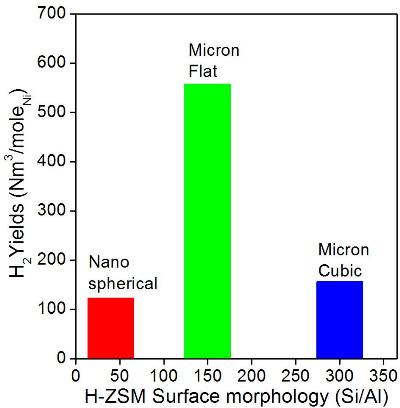
Effect of morphology (and/or Si/Al ratio) of added zeolite material on hydrogen yield in the decomposition of methane on Ni-based catalysts.
Zaineb Bouaziz
Claude Bernard University Lyon 1, France
Title: Adsorption of nisin into layered double hydroxide nanohybrids and in-vitro controlled release

Biography:
Zaineb Bouaziz is a PhD student. Her research work is based on double lamellar hydroxides materials used in biomedical application at the European Institute of Membranes Sciences, University Montpellier II, France.
Abstract:
Layered double hydroxide (LDH) nanohybrids intercalated biomolecules, including oligonucleotides, genes and peptides/proteins, have attracted particular attention since they exhibit improved safety and effectiveness as successful delivery biosystems. The current study specifically investigated the adsorption of nisin peptide and precisely controls the release of the payload. Adsorption occurred from peptide solution in contact with zinc-aluminum LDH at room temperature, looking out over the influence of the Zn2+/Al3+ ratio, the anion exchange capacity, the nature of the intercalated anion, the host matrix, and the host morphology. Higher adsorption was obtained, around 80% of the loaded nisin and successful intercalation was verified by X-ray diffraction. The in-vitro release tests of the nisin from the biohybrid formulation was held over 25 days in PBS medium (0.01 M, pH 7.4) showed that no burst release phenomenon occurred at the beginning step and a sustained-time release of nisin was obtained compared with the free nisin. Therefore, these preliminary results are encouraging for the development of bioprotectors based on nisin intercalated LDH and being implemented in the food and medical industries.
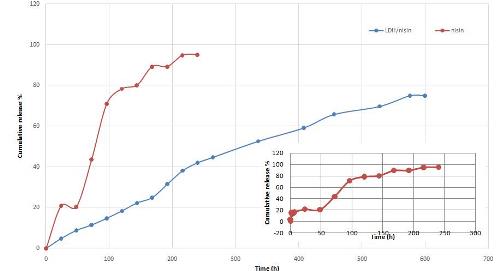
Comparison of in vitro release profile of nisin and nisin loaded Zn2Al−Cl LDH

Biography:
Hanadi A Almukhlifi has done his BSc in Chemistry from the Tabiah University, KSA. He has completed his MPhil and PhD in Inorganic Chemistry from the University of Newcastle, Australia.
Abstract:
The complete oxidation of isobutane has been studied using the oxidation catalysts β-MnO2, α-Fe2O3, Co3O4 and NiO, prior to and following addition of 5 wt% Au nanoparticles. The activity order is Co3O4>β-MnO2>α-Fe2O3, with the position of NiO dependent on the Ni3+ content which changes with temperature. Preformed n-hexanethiolate-stabilized gold nanoparticles, following adsorption and thermolysis in air, introduce a small amount of sulfur as adsorbed sulfate. The sulfate appears to block the reoxidation step in the Mars-van Krevelen mechanism. This can have a significant effect on catalytic activity, as observed for β-MnO2. TEM/STEM studies indicate that gold nanoparticles of 2–4 nm in diameter form, which depends on the identity of the metal oxide and its specific surface area. Gold nanoparticle size effects have been studied on NiO, and showed that the apparent activation energy and temperature of initial reaction depend on nanoparticle size. Comparisons of the multicomponent Au/MOx/γ-Al2O3 (M:Al=1:10) catalysts, where M=Mn, Fe, Co, Ni, have also been studied, and all are more active catalysts than Au/γ-Al2O3, but less active than the unsupported catalysts. Gold 4f7/2 XPS studies on Au/MOx and Au/MOx/γ-Al2O3 have shown that the only common species present is Au(0), suggesting that higher oxidation states of Au are not important in oxidation catalysis.

Rodrigo de Siqueira Melo
Federal University of Rio de Janeiro, Brazil
Title: Assessment of the antifouling effect of exopolysaccharides incorporated into copper oxide-based organic paint

Biography:
Rodrigo de Siqueira Melo has graduated in Biological Sciences and has done his Master’s in Biochemistry from the Institute of Chemistry (UFRJ). He has done his Doctorate in Technology of Chemical and Biochemical Processes, UFRJ. He is currently an Adjunct Professor at the Federal University of Rio de Janeiro, Campus Macaé, Brazil. He has developed projects with exopolysaccharides of marine cyanobacteria for application as antifouling in anticorrosive paints. He is currently the Coordinator of the Group of Bioelectroanalytics and Advanced Materials at UFRJ-Campus Macaé and develops research in the area of ​​quantification of heavy metals in different samples using electroanalytical methods, electrode construction and modified sensors for interaction with different macromolecules, study and development of anticorrosive coatings and development of films by electropolymerization with natural marine products.
Abstract:
The anticorrosive and antifouling performance of copper oxide-based organic coatings incorporated with microbial exopolysaccharides (EPS) was studied using electrochemical impedance spectroscopy (EIS) and scanning electron microscopy (SEM) after immersion in water produced by oil wells and in natural seawater. EPS incorporation in the paint did not influence the coating's final anticorrosive behavior. Moreover, no bacterial adhesion occurred during the immersion period in the presence of EPS, indicating biopolymer as a promising biocide for the antifouling paint sector.
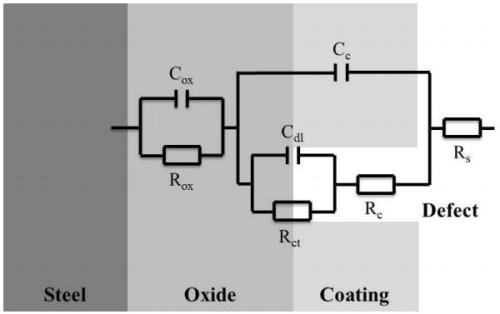
Equivalent electrical circuit proposed for copper oxide-based organic coatings in the absence and presence of EPS after 144 days of immersion in water produced by oil wells; Rs: solution resistance, Cc: paint capacitance, Rc: paint resistance, Cdl: bilayer capacitance, Rct: charge transfer resistance, Cox: oxide layer capacitance and Rox: oxide layer resistance.
Oluwatobi S Oluwafemi
University of Johannesburg, South Africa
Title: Simple green synthesis of amino acid functionalized CdTe/CdSe/ZnSe core-multi shell with improved cell viability for cellular imaging

Biography:
Oluwatobi S Oluwafemi is a Researcher at the National Research Foundation (NRF), South Africa in the Department of Applied Chemistry, University of Johannesburg. His research is in the broad area of nanotechnology and include green synthesis of semiconductor and metal nanomaterials for different applications which include but not limited to biological (imaging, labeling and therapeutic), optical, environmental and water treatment. He has author and co-author many journal publications, book chapters and books.
Abstract:
We herein report a simple, economical and green synthesis of highly fluorescent, water soluble and stable arginine functionalized CdTe/CdSe/ZnSe multi core-shell nanoparticles (NPs) with enhanced cell viability for cellular imaging. The synthesis of the CdTe/CdSe/ZnSe NPs was carried out under ambient conditions in the absence of an inert environment. The as-prepared NPs were characterized using UV-Vis absorption and photoluminescence (PL) spectroscopy, energy dispersive spectroscopy (EDS) and high resolution transmission electron microscopy (HRTEM). The optical analyses showed an enhancement in the fluorescent intensity after the functionalization with improved optical properties. The functionalized NPs (F-NPs) displayed higher cell viability compared to the bare NPs when investigated on KM-Luc/GFP cell line at different concentrations. The fluorescent image indicated that the as-synthesized functionalized NPs were taken up by the cells. Recommendations are made for treatment centers to become trauma- informed that would help this recognition.
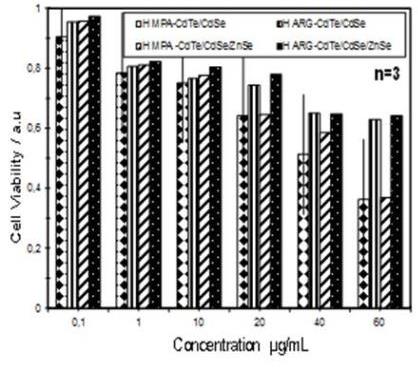
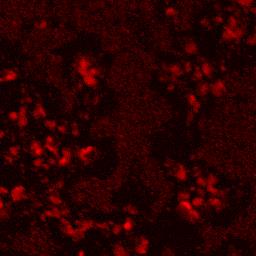
Matteo Chiesa
Khalifa University of Science and Technology, UAE
Title: Tapping on the shoulders of giants

Biography:
Matteo Chiesa is the Head of the LENS (Laboratory for Energy and Nano Science) at the Khalifa University of Science and Technology. His research focuses on the creation and the establishment of technologies necessary to adapt the current energy system into a more sustainable, competitive and secure one, in particular the use of properly designed nanomaterials in low-energy systems. His scholarly contribution has focused on understanding, controlling and manipulating matter at the nanoscale where chemical reactions, nucleation processes, corrosion and phase transitions originate. Specifically the effects that atmospheric moisture and the presence of nanoscale water films on surfaces have on such processes have been consistently investigated by means of purposely developed experimental techniques.
Abstract:
With the advent of the atomic force microscope (AFM) over two decades ago, the scientific community believed to have found the key instrument to identify, measure and tabulate the fundamental forces of nature that nanostructures, molecules and atoms exert onto each other. On the other hand, the quest to identify and recognize atoms or materials from atomic footprints has remained an active field of research up to this date, remains challenging and proves elusive particularly when considering the generalization and standardization of measurements and procedures. In particular, standardization and tabulation in the field of probe microscopy is still lagging far behind other fields of research such as proteomics, metabolomics and genomics that are heavily assisted by computer science, large data bases and powerful search engines that allow rapid access to the data bases. The talk will present our recent effort of enhancing the format of data presentation, processing and storage in probe microscopy and produce databases or repositories mimicking the materials genome initiative, the medical literature analysis and retrieval system online (MEDLARS) or the proteomics identifications database (PRIDE) or that can be searchable online via search engines mimicking PubMed or the PRIDE web interface. This scientific venture aims at tabulating all materials and substances in a fashion similar to that in which the periodic table was originally constructed. It will heavily rely on the assistance of computer science similarly to the way in which bioinformatics assists biology today, for example, in the human genome project, proteomics and metagenomics, providing: 1) relational databases, 2) automated experimental design automation and tutorials, 3) referenced and cross-referenced information, 4) open source codes to algorithms and 5) collaborations with private companies assisting in the design and generation of libraries, algorithms and experimental design. In summary, it aims at mimicking current advanced forms of computer science assisted biology.
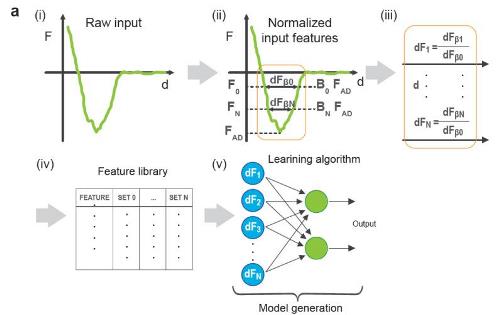
Illustrations of (a) i) raw data, ii) input features, iii) normalized input features, to iv) generation of a feature library and v) model generation from a feature library set.
Guodong Liang
Sun Yat-sen University, China
Title: Sticky nanopads of crystallizable fluorescent polymers for rapid and sensitive detection of organic pollutants in water

Biography:
Guodong Liang has his expertise in synthesis of functional polymers using living/controlled polymerization techniques, construction of polymer nanomaterials with well-defined architectures and functionalities through assembly strategy, and exploring applications of the polymer nanomaterials in chemical sensing, imaging, and detection of water pollutants. He has developed crystallization-driven strategy for synthesis of polymer nanomaterials with high performances. Moreover, he has proposed disassembly strategy for synthesis of polymer nanoparticles smaller than 20 nm. He has been the author of 78 peer-reviewed journals including JACS, ACS Macro Lett., ACS Sensors, Macromolecules, Polym. Chem., Chem. Eur. J., Chem. Commun., Carbon, etc.
Abstract:
Detection of organic pollutants in aqueous media is crucial for ensuring quality and safety of water resource. Conventional detection methods suffer from bulky and expensive devices, as well as time-consuming procedures. Herein, we construct a type of sticky nanopads of crystallizable fluorescent polymers for facile detection of toxic pollutants in water. The nanopads with thickness of approximately 6.3 nm are comprised of a single layer of crystalline polymers with surface-enriched chromophores showing aggregation-induced emission (AIE) characteristics (Figure 1). The sticky nanopads are inclined to absorb organic pollutants in water through diverse interactions including hydrophobic, and π-π interaction. The stuck organic pollutants on the surface of nanopads subsequently quench the fluorescence emission of the chromophores. The sticky nanopads allow rapid detection of organic pollutants in the order of seconds at a concentration as low as 7 ug/L, by far quicker and more sensitive than existed fluorescent materials in literatures. The sticky nanopads of crystallizable fluorescent polymers offer a new access to rapid and sensitive detection of organic pollutants in water.
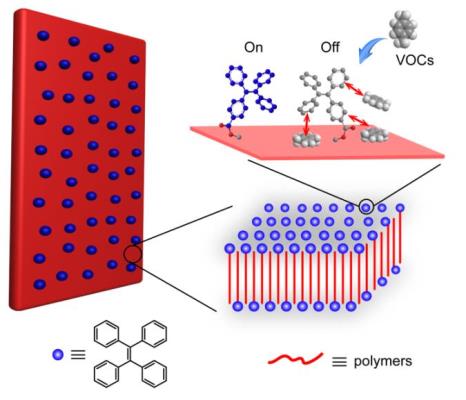
Schematic illustration of sticky nanopads of crystallisable fluorescent polymers for sensing VOCs.
Varlei Rodrigues
University of Campinas, Brazil
Title: Using fused deposition modeling 3d printing for simplified fabrication of integrated microfluidic devices

Biography:
Varlei Rodrigues has completed his PhD at the age of 28 years from Universidade Estadual de Campinas and postdoctoral studies from Ecole Polytechnique Fédérale de Lausanne. He has published more than 25 papers in reputed.
Abstract:
The preeminent control, manipulation and analysis of liquids at the submillimeter scale in microfluidics devices allowed the integration of research fields with emergent technologies such as lab-on-chips and organ-on-chips. Microfluidic devices based on Poly-Dimethylsiloxane (PDMS) shown a plethora of experimental possibilities due to good transparency, flexibility and ability to adhere reversibly and irreversibly to distinct materials, however, its cost and handling directed the field to search for new options. The simple, fast and efficient prototyping process offered by 3D printing technology makes the technique suitable across diverse applications, emerging it as an alternative to the traditional approaches. We will present the use of a home-made fused deposition modelling 3D printer for rapid prototyping of microchannels in Poly-Lactic Acid (PLA). We were able to 3D-print sealed PLA microchannels, achieving important features, such as good transparency, use of a thermoplastic (PLA) alternative to Poly-Dimethylsiloxane (PDMS) and easy integration of other materials during printing. In particular, flexible interdigitated electrodes were easily integrated within the microchannel, creating a microfluidic device within less than one hour. Finally, the 3D printing technology potentiates the field with more creative ideas and alternative materials for a rapid prototyping of complex structures, paving the way to more abundant developments.
Gabriel Gaal
University of Campinas, Brazil
Title: Fabrication of conductive trails using 3D printing technology

Biography:
Gabriel Gaal is a Master’s student in Applied Physics at the University of Campinas, focusing on 3D printed electrodes for application in organic electronics and bio-sensing devices. He has his expertise in instrumentation for fused deposition modeling (FDM) 3D printing and application of FDM 3D printed devices in science and technology. His recent work with 3D printed microfluidic devices opened the field for simple integration of such devices with several other devices or functionalized substrates. Moreover, his experience with integration of 3D printed micro-channels and functionalized substrates yielded collaborations with several groups in different fields such as bio sensors, bio and biomedical physics.
Abstract:
Nowadays, one of the biggest issues addressed to sensor fabrication is build up efficient electrodes as an alternative to the complex and expensive processes required by traditional techniques. Within this context, printed electronics arises as an interesting alternative due its simplicity and robustness to put electrodes on various surfaces. Fused Deposition Modeling (FDM) 3D printing can be widely explored as a cheap and accessible technology to fabricate electrodes. We show here the fabrication of fully 3D printed interdigitate electrodes (IDE) using a home-made FDM 3D printer and a commercial graphene-based PLA filament. We used a standard home-made 3D printer (Mendel90) with a commercial hot nozzle of 0.4 mm in diameter to extrude transparent PLA at 200ºC and a graphene-based PLA at 175ºC. The molten filament is further deposited on a hot bed (60ºC) having 200mm x 200 mm, using a mirror as the heated platen to ensure a flat and smooth printing surface. Extruder and hot table are moved by stepper motors following Cartesian coordinates, printing the object in a layer-by-layer process. The 3D printed IDEs were easily assembled within 6 minutes, and their frequency responses on aqueous medium were compared with traditional gold IDEs fabricated through microfabrication technique. Furthermore, we proposed a surface treatment with a solution of H2SO4 + KMnO4, and we observed a huge enhancement of the IDE response. Conductive tracks 3D printed with a graphene-based PLA enabled a rapid prototyping and reduction in the steps for the fabrication process of IDEs which could be assembled in a few minutes. A good electrical response was obtained via surface treatment recovering the gold IDE frequency response on aqueous media. Finally, 3D printing technology potentiates several fields with more creative ideas, cost-effective and alternative materials for a rapid prototyping of complex devices, paving the way to more abundant developments.
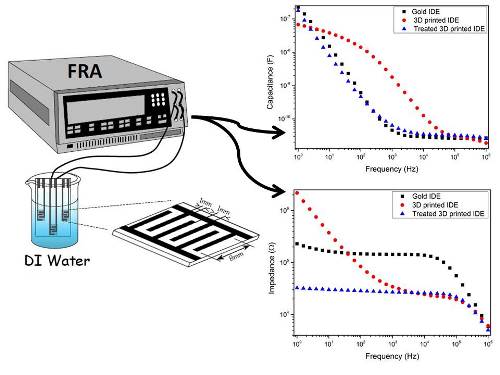
Comparison of the real capacitance and impedance modulus frequency response of gold IDE, fully 3D printed IDE and another fully 3D printed IDE treated with sulfuric acid and potassium permanganate. We measured the frequency response of the IDEs with a commercial frequency response analyzer (Solartron). The measurements were taken within an aqueous medium.
Weichun Pan
Zhejiang Gognshang University School of Food and Biotechnology, PRC
Title: Salting-in effect on muscle protein extracted from the giant squid (Dosidicusgigas)

Biography:
Dr. Pan has completed his PhD at the age of 36 years from the University of Houston and continued his postdoctoral studies at the same school. Then he went to Tohoku University serving as a researcher. He is the chiar of Applied Chemistry Department. He has published more than 20 papers in reputed journals.
Abstract:
The salting-in effect of muscle protein is a well-known phenomenon in food science but is hard to explain by conventional theories. Myofibrillar protein extracted from the giant squid (Dosidicusgigas) was selected as a model muscle protein to study this mechanism in potassium chloride (KCl) solutions. Studies have reported changes in the secondary structures of myofibrillar protein molecules caused by concentrated salt, particularly in the conformation of the paramyosin molecule. Zeta-potential determinations showed that these secondary structures have modified protein molecule surfaces. As salt concentration increased from 0.1 to 0.5M, the zeta-potential of the myofibrillar protein molecules fell from −7.24±0.82 to −9.99±1.65 mV. Meanwhile, the corresponding second virial coefficient increased from –85.43±3.8×10-7 to –3.45±1.3 × 10-7 mol mL g-2. Based on the extended law of corresponding states, the reducing attractive interactions cause protein solubility to rise. Determining the solubility in alternating KCl concentrations also demonstrated that this conformational change was reversible.
Sule Erten Ela
Ege University-Solar Energy Institute ,Turkey
Title: Fullerene based organic and perovskite solar cells

Biography:
Sule Erten Ela received Assistant Professor position in 2005 and Associate Professor Position in 2009 and Full Professor position in 2015 in Ege University-Solar Energy Institute. Sule Erten Ela is a specialist on Dye Sensitized Solar Cells (DSSC), Solid State Dye Sensitized Solar Cells (SDSC), Heterojunction Solar Cells (BHJ/ IBHJ), Flexible Solar Cells, Organic Field Effect Transistors (OFET), Organic Light Emitting Diodes (OLED), and she has high level studies on organic electronic technologies. Prof. Dr. Sule Erten-Ela received prestigious award of Alexander von Humboldt in 2011. She was selected Testimonial of Alexander von Humboldt Foundation in 2012. She received Turkish Academy of Sciences-Outstanding Young Scientist Award (TUBA-GEBIP) in 2013. She received UNESCO-LOREAL Young Woman Scientist Award in 2014. In 2015, she received Young Scientist Award from The Science Academy (BAGEP). And she received a Research&Incentive Science Award from Middle East Technical University in 2016.
Abstract:
Among fullerene derivatives, PCBM offers the advantages of good solubility in organic solvents (chloroform, chlorobenzene, dichlorobenzene, etc.), higher electron mobility and higher electron affinity. However, weak absorption in the visible region and low lying LUMO level are the weak points. Weak absorption of PCBM limits the light harvesting in photovoltaic conversion and low LUMO level of the acceptor result in lower open circuit voltage (Voc) in PSCs, since Voc is strongly related to the difference between the LUMO level of acceptor and the HOMO of the donor material. Therefore, it is very important to design and synthesize new soluble fullerene derivatives with stronger visible absorption and higher LUMO energy levels than PCBM. It is crucial to control the lowest unoccupied molecular orbital (LUMO) of electron accepting materials for producing efficient charge transfer in bulkheterojunction (BHJ) solar cells. Due to their high LUMO level, soluble bis-adducts of C60 are of high interest for improving the Voc in BHJ solar cells. In this work, we have developed novel fullerene derivatives for organic solar cells and perovskite solar cells. A novel bis-4-propylpentyl [6,6] methanofullerene bis-adduct, using an alkyl solubilizing group. The optoelectronic, electrochemical and photovoltaic properties of this bis-product are investigated. Perovskite heterojunction solar cells have attracted considerable attention because of their unique efficiencies. Novel fullerene bisadduct dicarboxylic material showed good performance in perovskite solar cells. Novel Benzoic acid fullerene bis adducts pays significantly more attention for engineering perovskite heterojunction solar cells to passivate the defects on surface and grain boundaries of perovskite films. Our photovoltaic results show that Benzoic acid fullerene bis adduct compound is highly promising for the application in heterojunction perovskite solar cells because of its close solar cell efficiency to PCBM material. The carboxylic group may form hydrogen bond with I- ion in the perovskite and passivate the surface of perovskite, thus reducing the recombination. Our results show that the efficiency of reference perovskite bulk heterojunction solar cell using PCBM is higher than 1.066 times that of perovskite heterojunction solar cells using benzoic acid fullerene bis adducts. Our successful preliminary results suggested that further optimization of this novel fullerene bis-adduct can yield higher efficiencies with chemical modifications to fine tune the electronic properties.
Zhenyu Wang
Beijing Forestry University, China
Title: Influence of ultrasound-assisted extraction on volatiles and residues in wood pyrolysis

Biography:
Zhenyu Wang is a Master’s student at the Beijing Forestry University, China. He has done his studies in the fields of pyrolysis and thermal treatment of biomass, especially wood. Till date, he has published papers relevant to the influence of ultrasound pretreatment on the pyrolysis characteristics and kinetic parameters of Eucalyptus, the heat transfer process in pyrolysis of garden waste, and the differences of pyrolysis process between heartwood and sapwood of Sabina Chinensis, etc. The results provide more insights into the process of pyrolysis and can be helpful in further studies.
Abstract:
Eucalyptus was used as the raw material for treatment with ultrasound-assisted extraction (UAE) to study the ultrasonic effects on volatiles emitted and residues produced during pyrolysis. A swept ultrasonic cleaner with a frequency of 40 kHz and an intensity of 360 W was applied to samples at 60ºC for 30 minutes. The characteristics of the ultrasound-treated samples were then compared with those of Soxhlet-extracted and untreated biomass by TG-FTIR and SEM. The results showed both mechanical and chemical effects of ultrasound played a significant role in efficiently altering biomass characteristics. In thermogravimetric analysis, UAE samples showed the highest maximum mass loss rate (-52.1%/min) with the lowest temperature (378.4ºC), while the other two samples presented similar trends to each other with lower maximum mass loss rate. Volatile profiles obtained by TG-FTIR indicated that CO and methanol components were mainly influenced by extraction, while CO2, CH4, and formic acid responded more strongly to the effects of ultrasound. After UAE, an increase in CO, CH4 and decreases in CO2 and formic acid were produced during pyrolysis. From SEM images, the fracture of pit membranes clearly showed the mechanical effects of ultrasound, which accounted for the significant enhancement of extraction of valuable ingredients.
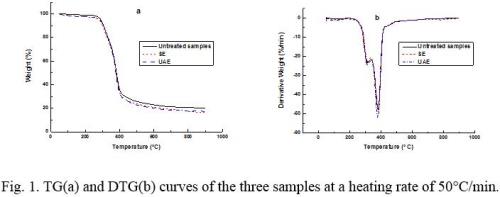

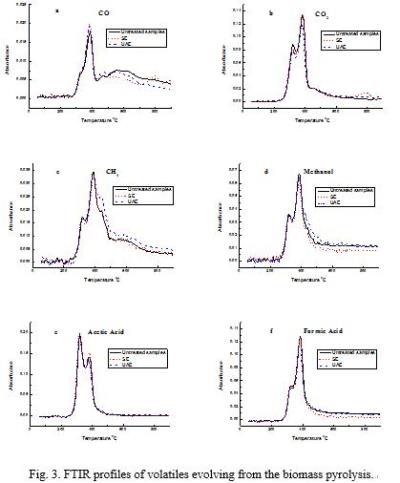
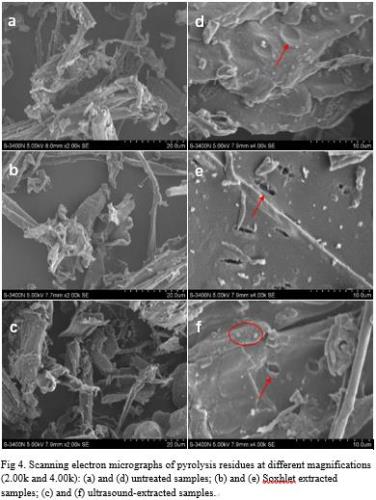
Nalan Özdemir
Erciyes University, Turkey
Title: The effect of synthesis conditions on enzymatic activity of metal ion incorporated enzyme based hybrid nanoflowers

Biography:
Nalan Özdemir has her expertise in biochemistry, especially separation and purification of enzymes, enzyme immobilization, preparation and characterization of enzyme-inorganic hybrid nanostructures. Dr. Özdemir is the founder of the Biochemistry Division at Chemistry Department, Faculty of Science- Erciyes University/TURKEY.
Abstract:
Enzymes are efficient and sophisticated biocatalysts. They evolve into unique biomacromolecules with three-dimensional structures consisting of a linear sequence of amino acids. Enzymes have received considerable attention owing to their unique properties, including high catalytic activity, stability, selectivity, low toxicity and water solubility. However, high cost of the enzyme purification procedures and the instability of the free enzymes in aqueous solution strictly limits their applications. To address these limitations of free enzymes, several immobilization methods have been developed. In general, immobilized enzymes show improved stability, making them efficient, reusable and economical. However, increased catalytic activity is generally limited due to mass transfer limitations between the enzyme and the substrate and conformational changes in the enzyme. Recently, Zare et al. have reported an encouraging breakthrough in enzyme immobilization with the synthesis of hybrid organic–inorganic nanoflowers have highly enhanced catalytic activity and stability. Therefore, there is a considerable interest in the synthesis and application of organic-inorganic hybrid nanoflowers.
In this study, we synthesized organic-inorganic hybrid nanoflower by using laccase as organic components and Cu2+ as the inorganic component. We examined the effects of the synthesis conditions on the formation of Laccase-Cu2+ hybrid nanoflowers. FTIR XRD, and EDX spectroscopy and SEM were used to confirm the synthesized hybrid nanoflowers. To calculate the encapsulation yields of the hybrid nanoflowers, Bradford assay was used. We observed that by changing the synthesis conditions, including enzyme concentration, pH, and temperature, the morphology and enzymatic activity of the synthesized Laccase-Cu2+ nanoflowers were changed. In the synthesis phase, the pH influences petal density only, whereas enzyme concentration and temperature affect nanoflower size and petal density. But it should be noted that the solubility of CuSO4 depends on the pH. The appropriate flower size and shape, enzyme content, and flower density are the critical factors for high enzymatic activity.
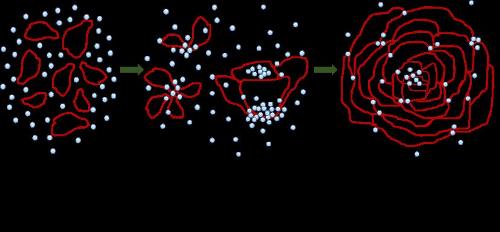
Y Bustami
University of Waterloo, Canada
Title: Analysis of the heterogeneous structure of iron oxide/gold nanoparticles and their application in a nanosensor

Biography:
Y Bustami is a Lecturer at the School of Biological Sciences, University of Science, Malaysia. She did her first degree at the National University of Malaysia in Genetics (Bioscience and Biotechnology). Then, she obtained an MSc from the University of Science, Malaysia in Biotechnology. She has completed her PhD last year (2016) in the Department of Chemical Engineering, University of Waterloo, Canada. Her PhD work is on the development of nanocatalytic-based assay for the detection of an endocrine disrupting compound in aqueous solution. Her current research interest includes nanoparticles synthesis and characterization, immobilization of biomolecules on nanoparticles and development of nanosensor technology.
Abstract:
Magnetic iron oxide-gold nanoparticles (IONPs-AuNPs) could provide a useful platform for biosensing purposes. The aim of this study was to investigate the formation of such particles using a simple electro- static self-assembly technique, and then to demonstrate their application using a glucose detection assay. AuNPs were attached to the IONPs surface by ionic interaction, as verified using UV–Vis spectrophotometry. Then, a carbodiimide-coupling technique was used to covalently attach glucose oxidase (GOx) onto the nanoparticles’ surface and the bioactivity was measured using an ABTS colorimetric assay. For characterization, UV–Vis spectrophotometer, DLS, zeta potential, TEM, EDX, XPS and FTIR techniques were used. The particle diameter obtained from TEM was 16.1±11.1 nm and EDX confirmed the presence of Au and Fe elements. In addition, FTIR results exhibited strong vibrational modes around 1654, 1546 and 3369 cm-1 that appeared to be primarily due to immobilization of GOx onto Fe/Au. The colorimetric assay also showed a significant increase in green color intensity, due to oxidation of ABTS, with increasing glucose concentrations ranging from 20 M to 100 M. IONPs/Au nanoparticles showed a good potential for application in this colorimetric assay, thus suggesting an excellent basis for a nanosensor system using these particles.
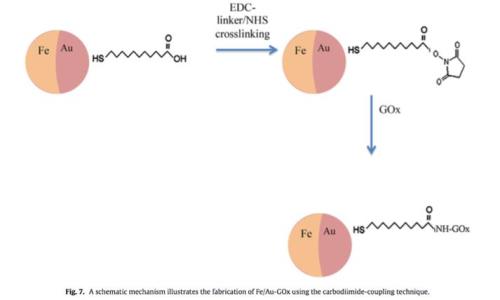

Biography:
Vladimir L. Solozhenko is the world leading expert in high-pressure physical chemistry of boron nitride and novel superhard phases. He was the first who employed synchrotron radiation in situ studies to further advance in understating the kinetics and mechanism of phase transformations in the B–C–N–O system at extreme conditions which resulted in synthesis of new high-pressure phases i.e. cubic BC2N, diamond-like BC5, and nanocrystalline cBN, the hardest known solids after diamond. The last twenty years of his 35-years scientific career were very productive due to the international networking which enabled him to perform cutting edge research using state-of-the-art experimental facilities. Apart from impact on understanding of high-pressure physics and chemistry of compounds of light elements, the results of his work are expected to have important technological applications.
Abstract:
Chemical interaction and phase relations in the boron–phosphorus system have been systematically studied up to 8 GPa and 2800 K using synchrotron X-ray diffraction. In the whole studied pressure range solid phosphorus does not react with boron. At 5.5 GPa, phosphorus melts at 1300 K that is accompanied by appearance of cubic BP. However, unreacted solid boron and liquid phosphorus are still present, even at 2000 K. For the mixture with BP stoichiometry, the reaction is completed only above 2100 K, and quenched samples are single-phase boron phosphide. For reaction mixture of the B6P stoichiometry, formation of BP is observed immediately after phosphorus melting, while formation of rhombohedral boron subphosphide B12P2 starts only above 1750 K, and both boron phosphides coexist in the 1750-2000 K range. Above 2000 K, only B12P2 is present in the system, and quenched samples are single-phase boron subphosphide.
Similar behavior in the B–P system is observed at lower pressures. All this is indicative of the substantial kinetic barrier of reaction between elemental boron and liquid phosphorus at temperatures below 2000 K, perhaps due to a high viscosity of phosphorus melt under pressure.
At pressures to 9 GPa BP melts congruently, and the melting curve exhibits negative slope (-60 K/GPa), which is indicative of a higher density of the melt as compared to the solid phase. B12P2 also melts congruently, but the melting curve has a positive slope of +23 K/GPa. At pressures to 26 GPa, the icosahedral crystal structure of B12P2 remains stable up to the melting.
Bulk polycrystalline BP and B12P2 synthesized at 7.7 GPa by crystallization from B–P melt exhibit Vickers hardness of 28 GPa and 35GPa, respectively, which is in agreement with theoretical values predicted by the thermodynamic model of hardness.

Biography:
LiDong Zhao has completed his PhD at the age of 30 years from University of Science and Technology Beijing (China) and postdoctoral studies from Universite Paris Sud (France) and Northwestern University (USA). He is a full professor from School of Materials Science and Technology, Beihang University, Beijing, China. He has published more than 100 papers in reputed journals, such as Science, Nature, Chem. Rev., Nature Comm., JACS, EES, AM, PRB etc.
Abstract:
Thermoelectric materials, capable of converting waste heat into electrical power and vice versa, are currently receiving a significant scientific attention. The efficiency of a thermoelectric device is determined by ZT, ZT = (S2σ/κ)T, where S, σ, κ and T are the Seebeck coefficient, the electrical conductivity, the thermal conductivity, and the temperature, respectively. S and σ must both be large, while κ must be minimized. However, the high ZT is challenged by the interdependent relationships for these parameters. Several approaches to enhance ZT have emerged in the last decades, including band structure engineering to enhance Seebeck coefficients, nanostructuring and all-scale hierarchical architecturing to reduce thermal conductivity, and band alignment to maintain hole mobility. Alternatively, one can also seek high thermoelectric performance in pristine materials with intrinsically low thermal conductivity. In this talk, some typical compounds, SnSe, BiCuSeO, are presented as promising thermoelectric materials. Their high performances are mainly due to their intrinsically low thermal conductivity, which may arise from a large anharmonicity, lone pair electrons, a large molecular weight, a complex crystal structure, charge density wave distortions, etc.
Lin Zhang
Northeastern University, China
Title: Packing structures and electronic properties of Si-Ge alloy clusters from DFTB calculations

Biography:
Lin Zhang has his expertise in multi-scale modelling and simulations for materials. He got his B.Sc. in applied physics at Dalian University of Technology, M.Sc. in plasma physics at Dalian University of Technology, Doctor's degree (Ph.D.) at Northeastern University in China, and Post-doctor at Institute of Metal Research, Chinese Academy Science. His open and contextual analysis models have been used to characterize locally packing patterns for small clusters. He has built these models after years of experience in research, evaluation, and teaching in education institutions. The foundation is based on molecular dynamics and density functional tight-binding approaches.
Abstract:
Over the past few decades, much attention has been paid to the understanding of the structures and properties of SiGe alloy materials owing to their potential applications in a variety of microelectronic and optical-electronic devices. Ge crystallizes in the same diamond structure as Si does, and Ge and Si can be mixed in any ratio to form SiGe alloy materials. These systems may have properties markedly different from those of their macroscopic counterparts and that depend in a highly non-trivial way on the composition and size of the clusters. Accordingly, a detailed understanding the composition and size effects of SiGe clusters can provide information that is relevant not only for basic science but also for applications. The structural, energetic, and electronic properties of small-sized SixGey (x+y=2-9) alloy clusters are studied by using the Density Functional Tight Binding (DFTB) method combined with unbiased structure optimization using a genetic algorithms (GAs) method. The results demonstrate a strong dependence of all properties not only on cluster size but also on cluster composition. In general, the Si atoms prefer to be closer to the center of the cluster (defined as the arithmetic average of all nuclear positions), whereas the Ge atoms are further away from the center. Although it in general is difficult to identify particularly stable clusters containing more than one element, some SixGey clusters are found to be more stable. According to the Mulliken gross populations, an electron transfer from the Ge atoms to the Si atoms is observed, especially for the atoms most far from the center.
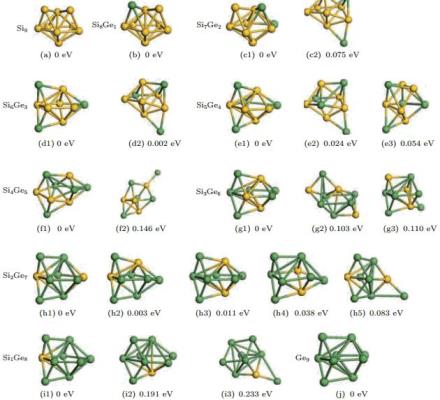
The optimized structures for SixGey (x+y=9) alloy clusters.
Mervette El Batouti
Alexandria University, Egypt
Title: Recovery of direct dyes from spent dyeing and soaping liquors by macro-reticular ion exchange resins

Biography:
Mervette El Batouti is currently working as a Faculty of Science in the department of Chemistry of Alexandria University, Egypt.
Abstract:
Dyes are a very important class of organic pollutants that is well known for their hazardous effects on aquatic life and human beings. Several innovated techniques have recently evolved for the removal of dyes from industry and domestic effluents, among which adsorption is considered the best choice. In the present work an investigation regarding the recovery of direct dyes from aqueous streams for reuse, by macro-reticular ion exchange resins (IERs) that are relatively new in the market, has been carried out. The study included dyeing single jersey cotton grey fabrics with direct dyes from ISMAdye Company, Kafr El Dawar, Egypt. Solutions from thirteen different dyes, prepared at an average concentration between the spent and soaping liquors concentrations, were estimated spectrophotometrically, from the initial dyeing experiments, after being centrifuged, and the supernatant liquid separated, then each dye concentration determined. Batch adsorption experiments using both strong- and weak-base resins (SBR and WBR respectively) were conducted for each dye and both Freundlich and Langmuir isotherms were constructed. It was found that adsorption obeyed both isotherms, that monolayer adsorption took place, and that the dye molecular weight, structure and solubility, and type of anionic resin used, had varying effects on the extent of adsorption. Thus, direct Yellow RL had the highest adsorption on both SBR and WBR. Conversely Congo red, Violet R, and Blue RL proved to be the worst dyes adsorbed by the IERs, whereas Yellow RL and Red 8B exhibited favorable adsorption by SBR and accelerated adsorption by WBR. This way, it was possible to recover most of the dyes for reuse.
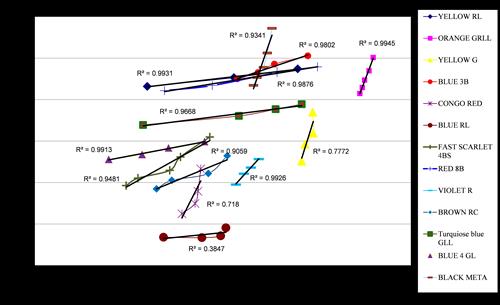
Rénal Backov
University of Bordeaux, France
Title: Integrative chemistry-based morphosyntheses of advanced porous materials dedicated toward energy conversion and storage

Biography:
Rénal Backov obtained his PhD in 1997 at the University of Montpellier, France while being a post-doc fellow at the University of Florida, USA 2001. Full Professor since 2010 at the University of Bordeaux his research focuses on the rational design of advanced materials through combining physical chemistry of complex fluids and chemistry. He formalized the concept of Integrative Chemistry in 2006 and was Laureate of the French Chemical Society in 2013. With more than 140 articles and 300 contributed papers, his research encompasses the domains of energy conversion and storage, drug delivery, sensors, heterogeneous catalysis, photocatalysis, etc.
Abstract:
Chemical sciences are on continuous evolution offering more and more complex synthetic strategies that rely on emerging inter- and trans-disciplinary action modes. In this context, beyond the ability of constructing advanced functional materials we demonstrate how integrative chemistry allows positioning chemical reactors within the geometric space. When it turns to energy dedicated advanced materials we will focus on oxide monoliths bearing hierarchical porosity. We will see first how through enzymatic engineering we can trigger biodiesel generation bearing unprecedented TON and TOF catalytic efficiency. Secondly when going from silica foams, used as hard templates, toward carbonaceous ones we will see how we can generate outstanding enzymatic biofuel cells, Li-ion and Li-S performant and stable battery electrodes. Also we will see that it is possible to trigger hydrogen storage and reversibility based on Li(BH4) confinements. Novel Bacteria-based bioreactors will be discussed.
Michael Pravica
University of Nevada, USA
Title: Synthesis of novel materials via hard x-ray photochemistry

Biography:
Michael Pravica is an associate professor of physics at the University of Nevada, Las Vegas (UNLV) and a member of the High Pressure Science and Engineering Center (HiPSEC) there. He obtained his B.Sc. degrees in physics and applied mathematics (with honors) from Caltech in 1988. Prof. Pravica then went on to earn his A.M. and Ph.D. degrees from Harvard University performing high pressure NMR experiments of molecular hydrogen. Prof. Pravica’s research interests involve the study of organic materials (including explosives) and inorganic materials under extreme conditions of pressure, temperature, and ionizing radiation. He has also enabled a new field of science that he terms useful hard x-ray induced chemistry wherein the highly penetrating, highly ionizing, and highly focused properties of hard x-rays are harnessed to perform in situ and highly controllable chemistry.
Abstract:
Statement of the Problem: By harnessing the highly energetic, highly focused, and highly penetrating properties of synchrotron hard x-rays (>7keV) to drive decomposition reactions (e.g. KClO4 +hv -> KCl +2O2 [1]), we have enabled acatalytic routes of chemical synthesis of novel materials under extreme or isolated conditions with little introduction of heat. In this talk, I will showcase recent developments in by discussing three studies that showcase useful hard x-ray photochemistry [1-5]: 1. Probable synthesis of CsF2 and CsF3 at high pressure via x-ray irradiation of a mixture of CsF and KBF4 [2]. Here, the KBF4 is used as a source of molecular fluorine [3]. 2. Synthesis and ambient recovery of stable doped polymeric carbon monoxide (doped poly-CO) via irradiation of SrC2O4 pressurized to 7 GPa [4]. 3. Successful hydrogenation and oxygenation of WO3 and intercalation of oxygen into the WO3 lattice in separate experiments via irradiation of selected mixtures of WO3 with NH3BH3 and KClO4, respectively, demonstrating a novel means to dope semiconductors with the potential of creating photocells that are more resonant with sunlight [5].
Gianfranco Pacchioni
University of Milan-Bicocca, Italy
Title: Oxides in catalysis: Role of reducibility from biomass conversion to CO oxidation

Biography:
Gianfranco Pacchioni (born 1954) received his PhD at the Freie Universität Berlin in 1984. He worked at the IBM Almaden Research Center, the Technical University of Munich, and the University of Milano. Since 2000 he is Full Professor at the University of Milano Bicocca where he is presently Vice Rector for Research. He received various awards including the Humbold Preis (2005), and the Blaise Pascal Medal of the European Academy of Sciences (2016). He is member of the Accademia Nazionale dei Lincei, the European Academy of Sciences and the Academia Europea. He has published 450 papers receiving more than 20000 citations (h-index ISI WoS 75) and given more than 350 lectures. His main interests are the electronic structure of oxides and their surfaces and interfaces, defects in oxides, supported metal clusters, and catalysis.
Abstract:
Reduced oxide supports often exhibit a higher catalytic activity than the stoichiometric surface. Examples are production of liquid fuels from lignocellulose or CO oxidation to CO2. Despite the very different reactions, the catalysts are similar: Ru/TiO2 and Ru/ZrO2 in biomass conversion and Au/TiO2 and Au/ZrO2 in CO oxidation. The common denominator is that removing oxygen from the oxide surface, with formation of oxygen vacancies, results in enhanced catalytic activity. The reasons are clearly identified by studying, with a density functional theory approach, the profile for the reactions where a reduced surface gives lower barriers. However, while TiO2 is a reducible oxide, ZrO2 is not, at least if based on measures of bulk reducibility. We will show that several mechanism, in particular nanostructuring and formation of metal/oxide interfaces, can drastically change the surface chemistry of an oxide making zirconia reducible and as active as titania in catalysis by oxides.
Hisayoshi Kobayashi
Kyoto Institute of Technology ,Japan
Title: DFT study of electronic structures on TiO2/CdS and TiO2/CdSe quantum dots

Biography:
Hisayoshi Kobayashi is a Professor of Kyoto Institute of Technology. He got his Doctor's degree at Kyoto University in 1982 from Prof. Kenichi Fukui. His field is theoretical analysis of catalysis of metal and metal oxide surfaces. He got Award for Younger Researchers from the Catalysis Society of Japan in 1989, and the BCSJ Award Article from the Chemical Society of Japan in 2007. Hiroaki Tada received his Dr. degree in engineering from Kyoto University in 1991. After worked at Nippon Sheet Glass Co., he joined to Kinki University in 1997, and became a Professor in 2004.
Abstract:
Photoelectrochemical experiments and DFT calculations indicated that visible-light irradiation of the CdS quantum dots (QDs)−TiO2 direct coupling system (CdS/TiO2) causes the electron injection in two paths: The inter-CB electron transfer from CdS to TiO2 (path 1) and that the electron transfer from the valence band (VB) of CdS into the conduction band (CB) of TiO2 (path 2). Path 2 can be induced by the sub-bandgap excitation of CdS QDs to extend the spectral response of the CdS/TiO2 system. For path 2 as well as path 1 to effectively work, CdS QDs should be directly deposited on the TiO2 surface with high coverage.
According to the guideline, a photocatalytic growth of the preformed seed (PCGS) technique has been developed. Transmission electron microscopy observation and X-ray photoelectron spectroscopy measurements of the CdS/TiO2 prepared by the PCGS technique indicated that the TiO2 surface is highly covered by CdS QDs. The technique was applied to mesoporous TiO2 nanocrystalline films (mp-TiO2) to yield CdS/mp-TiO2. CdS QD-sensitized photoelectrochemical (QD-SPEC) cells with a structure of CdS/mp-TiO2 (photoanode)|aqueous sulfide solution|Ag/AgCl (reference electrode)|Pt (cathode) were fabricated. The rate of hydrogen (H2) generation in the QD-SPEC cell under illumination of simulated sunlight (AM 1.5, 1 sun, λ > 430 nm) increases with an increase in the TiO2-surface coverage by CdS QDs. We also show that the sub-bandgap excitation of a directly coupled CdSe quantum dot–TiO2 system induces electron injection from CdSe levels to the conduction band of TiO2.
Leonard J. Brillson
The Ohio State University, USA
Title: Spatially-resolved cathodoluminescence spectroscopy of ZnO Defects

Biography:
Leonard Brillson received his A.B. from Princeton University and his Ph.D. from the University of Pennsylvania. He has published over 350 journal articles and 4 books. He is a Fellow of the Institute of Electrical and Electronics Engineers, the Materials Research Society, the American Institute of Physics, the American Association for the Advancement of Science, and the AVS Science & Technology Society as well as a recipient of the Gaede-Langmuir Award. Prior to joining Ohio State University, he directed Xerox Corporation’s Materials Research Laboratory and had responsibility for Xerox Rochester’s long-range physical science and technology programs.
Abstract:
Spatially-resolved cathodoluminescence spectroscopy has contributed significant new information to our understanding of native point defects in ZnO micro- and nanoscale structures. This presentation will review representative examples of this work and the new perspectives gained from spatially resolving these defects both laterally and depth-wise. Results obtained from many groups worldwide include studies of Schottky diodes, polycrystalline, ceramics, nanostructures, and microwires. The nature and spatial distribution of native point defects in these materials together with their strong dependence on growth and processing suggest new avenues for their control in transport and optoelectronic device structures. A key aspect of ZnO-based materials and applications is the nature, spatial distribution, and electronic impact of native point defects. These features are particularly important at the micro- and nanoscale, where their physical properties can dominate charge carrier transport and electronic contacts. Starting from the optical identification of specific defects already discussed in the literature, this talk focuses on the new defect information provided by spatially-localized cathodoluminescence spectroscopy (CLS). This technique has unique advantages in measuring key defect features. Spatially-resolved CLS has now shown that: (1) native point defects are present inside these structures and not just on their surfaces; (2) their nature and distribution depend on the specific growth method used to create them; and (3) they can strongly affect nanoscale transport and device properties. These studies suggest many new avenues to understand and control defects in ZnO and may be of more general significance as spatially-resolved cathodoluminescence spectroscopy extends to other semiconductors and device structures.
Valentin Valtchev
Jilin University, P.R. China
Title: Zeolite molecular sieves: Present trends and prospects

Biography:
Dr. Valentin Valtchev is Research Director at the Laboratory of Catalysis and Spectroscopy (LCS) in Caen, France and “Thousand Talents” Professor at the State Key Laboratory of Inorganic Synthesis and Preparative Chemistry in Jilin University, P. R. China. His research involves synthesis and modification of zeolites and other porous solids that can be used for catalysis, separation and molecular recognition. He has published more than 200 papers, a number of review articles and book chapters, 6 books and 21 patents.
Dr. Valtchev is recipient of: “Baron Axel Cronstedt” award (2014) of the Federation of European Zeolite Associations; “Donald Breck” award (2016) of the International Zeolite Association; and “La Recherche 2016: Chimie” in France.
In 2016 Valentin Valtchev was elected President of the International Zeolite Association.
Abstract:
Porous materials are those permeable to fluids due to the presence of pores. Amongst different groups of materials the zeolite type materials has the biggest impact on the modern society. Zeolites are crystalline microporous crystals with well define pores with size below 2 nm, large micropore volume and specific surface area, tunable active sites and unique shape selectivity. These properties make zeolites indispensable catalysts and molecular sieves in petroleum refining, petrochemical industry, protection of the environment and as a component of different products used in the household. In the future, their impact will widen and be felt in the processing of heavier fossil and renewable feedstocks, optical and medical applications. The diversified feedstocks, together with the changes in the products demand and environmental regulations, make the design and engineering of zeolite based materials a complex task. In order to address new challenges detail insights in the structure-property relationship of zeolite molecular sieves are indispensable. The talk will provide an overview of the current developments in the field of zeolite-type materials. Both, in-situ and post-synthesis methods of modification of zeolite molecular sieves will be addressed. The advances in the understanding of the nucleation/crystal growth process will be discussed and example how the new knowledge serve to obtain zeolites with predetermined properties will be given. Post-synthesis methods for control of the physicochemical properties of zeolites will also be addressed. For instance, a drawback in the use of zeolites is the restricted diffusion, which is commonly associated with the sub-nanometer size of their pores where the active sites are located. The post-synthesis methods that allow overcoming this roadblock to the more efficient use of zeolites will be overviewed. Finally the complementarily between in-situ and post-synthesis methods with the goal to overcome the natural limits and obtain unique zeolitic materials will be addressed.
Ian S. Butler
McGill University ,Canada
Title: Selected applications of molecular spectroscopy in cultural heritage studies

Biography:
Professor Butler has been at McGill University since 1966. He has served as Department Chair and Associate Vice-Principal (Research). He is an Honorary Member of the Spectroscopy Society of Canada, a Fellow of both the Chemical Institute of Canada and the Royal Society of Chemistry. He has supervised about 200 researchers, resulting in the co-authorship of about 540 publications. His honours include thje Gerhard Herzberg Award for Excellence in Spectroscopy and the David Thomson Award for Excellence in Graduate Teaching and Supervision. His current research focuses on structural changes induced by high pressures and variable temperatures, biomass conversion, mechanochemistry and art forensics.
Abstract:
Throughout the world, considerable effort is being expended in identifying and preserving objects of national cultural heritage interest. Art forensics is particularly important in repairing damaged paintings and frescoes through the identification of the pigments that artists have used over the centuries. Such pigment analyses are also crucial in identifying forgeries. Most large art museums, e.g., National Gallery in London, Getty Museum in California and Metropolitan Museum of Art in New York City, now have laboratories attached to them, which are equipped with an array of modern molecular spectroscopic instrumentation, e.g., infrared, Raman, single-crystal and powder X-ray diffraction and mass spectrometers. In our laboratory, we have focussed our research work on the applications of infrared and Raman spectroscopy in art forensics. In particular, we have used photoacoustic infrared spectroscopy in establishing a data base of molecular spectroscopic information for a wide range of solid inorganic and organic pigments. In this lecture, we will give some selected examples of molecular spectroscopy in cultural heritage studies and also describe the technique of photoacoustic infrared spectroscopy and its application in art forensics.
- Current Innovations in Materials Chemistry | Research Aspects of Materials Chemistry | Role of Graphene in Advanced Materials
Location: Sylt 3

Chair
Janah Shaya
University of Strasbourg, France

Co-Chair
Yan Jiao
University of Adelaide, Australia
Session Introduction
Manuel Gaudon
University of Bordeaux, France
Title: Crystallite size, composition and structural feature correlations and their impact on opto-electronic properties of inorganic oxides
Time : 14:30-14:55

Biography:
Manuel Gaudon is an Associate Professor in the University of Bordeaux. He is specialist of inorganic pigments for X-chromic properties (thermochromic, piezochromic and photochromic) with solid-state chemist approach. He has worked on inorganic oxides with various structures as molybdates (AMoO4), hematite (Fe2O3), würtzite (n-doped ZnO), vanadium oxides (V2O3, VO2, V2O5) or aluminate spinels. He has got a wide experience in the management of individual or collaborative projects on infrared-reflector, irreversible thermochromic oxides for temperature detection, shock sensors based on piezochromic transitions of AMoO4 compounds, etc. He has 64 publications in Chem. Matter, Adv. Mater., Inorg. Chem., JSSC, etc., 3 proceedings and 2 book-chapters.
To present & exhibit your MATERIALS @ our upcoming series PS: Materials Conferences | Materials Chemistry Conferences | Materials Chemistry 2020
Abstract:
From more than a decade, in the Institute of Condensed Matter Chemistry of Bordeaux, we have been trying, to elaborate new functional nanomaterials with their optical properties controlled both via the crystalline structural network (solid chemistry approach) and via the crystalline size and shape (material science approach). Especially, nano-powders for pigment applications are concerned. In this talk, the focus is made on the importance of the synthesis route for the obtaining of nano- or submicronic particles: mechanosynthesis, sol gel processes, co-precipitation, spray pyrolysis, Pechini process, polyol synthesis, etc., are briefly described and compared in term of relative cost and drawbacks/benefits. Especially, the influence of the crystalline domain size on the optoelectronic properties of inorganic oxides is discussed from numerous examples: Influence of crystalline size on the structural parameters, on dopant solubility limit as well as on chemical homogeneity (atomic positions and unit-cell dimensions) is illustrated from the study of n-doped ZnO obtained from polyol route; Influence of the crystalline size on the interstitial site symmetry (key factor governing the optical properties) and its consequence on the red chromaticity of hematites; Influence of the crystalline size on cationic distribution inside multisite matrices, especially on the (Co2+, Mn2+) chromophore distribution inside white spinel matrix; Influence on the crystalline size and shape on the phase transition pressure-temperature associated with piezochromic-thermochromic phenomenon in AMoO4 compounds. Finally, it will be shown that nowadays, such materials receive attention due to their potential applications as smart pigments, convivial temperature/pressure indicators, in the areas of safety/security improvements, gadgets, packaging, motorization, autoclaves, shock detection on fragile substrates, etc.
Ali Radhi
University of Toronto, Canada
Title: Crystalline characterization in atomistic simulation by predominant and cumulative atomic common neighborhood perspective
Time : 14:55-15:20

Biography:
Ali Radhi has expertise in multi-scale modeling of ceramic polymorphs and structural characterization of deformation mechanics for non-monoatomic systems. His work is based on atomistic to continuum bridging approaches for high levels of coupling during atomic simulation for optimal use of molecular dynamics approaches with fraction of the computational costs. He has built a foundation for such modeling through extensive work with algorithmic optimization with mathematics department and going through clinical attachments in hospitals in Kuwait.
To present & exhibit your MATERIALS @ our upcoming series PS: Materials Conferences | Materials Chemistry Conferences | Materials Chemistry 2020
Abstract:
External loads and stimuli are known to change crystalline structures with distinct structural symmetry groups. With this change, the crystalline structure should be identified through its atomic bonding represented in a large number of observed deformation mechanisms along with its embedded defects for various crystal systems. Information extracted should discern ideal crystal phases from other generated crystalline features during atomistic simulations for multiple crystalline groups. Ideally, a method for arbitrary structures is preferred for ease of transferability between multiple crystalline systems case studies. The common neighborhood parameter (CNP) method has an optimal approach towards structural characterization through combining the advantages of both the common neighbor analysis (CAN) and the centro-symmetry parameter (CSP) methods. A new method will be presented as an improved approach on structural analysis from predominance of the common neighbor over the current atom, termed predominant common neighborhood parameter (PCNP). A more innovative method will also be presented that is based on the cumulative distance of nearest neighbors. This method rewards atoms with perfect surrounding structures with higher parametric values instead of smaller ones, labeled as cumulative common neighborhood parameter (CCNP). These methods are ideal to characterize cross-atomic species interactions in a more elaborate crystalline systems and centrosymmetric space groups. The methods showed higher sensitivity than CNP for characterizing atomic features during deformation. Enhancements to the methods can be included by considering larger range of atomic interactions present in the second neighborhood locale.
Elena Voloshina
Humboldt University of Berlin, Germany
Title: Electronic properties of graphene on metal substrates
Time : 15:20-15:45

Biography:
Elena Voloshina received her PhD in Chemistry from Rostov State University, Russia in 2001. She was a Post-doctoral Research Associate at RWTH Aachen University, at the Max Planck Institute for the Physics of Complex Systems in Dresden and at the Free University of Berlin, Germany. Since 2014, she is a Senior Researcher at the Humboldt University of Berlin. She has co-authored more than 70 publications in peer reviewed journals.
To present & exhibit your MATERIALS @ our upcoming series PS: Materials Conferences | Materials Chemistry Conferences | Materials Chemistry 2020
Abstract:
Graphene grown on metal surfaces is an exciting field of materials chemistry and physics from different points of view. Technologically, this is the main and the most perspective way for the large-scale preparation of high-quality graphene layers of different thicknesses with controllable properties. The obtained systems might be used for many applications, like spin filters, gas sensors, or in case of graphene-based moiré structures as templates for the preparation of exceptionally well-ordered nano-cluster lattices. Along with the practical view on these systems, experimental and theoretical investigations of graphene/metal interfaces gave rise to variety of fundamental questions. Two of them are: (1) nature of bonding between graphene and metal, and (2) origin of modifications of the electronic structure of graphene in vicinity of the Fermi level. Aiming to shed more light on the problem of the interaction of graphene with the substrates and modification of its electronic structure, different examples of the graphene-metal interfaces have been considered. Based on the analysis of a large amount of experimentally and computationally obtained band structures, we proposed a universal model, which allows one to describe qualitatively any graphene-metal system. All experimental observations can be understood in the framework of the approach. This work summarizes the long-term debates regarding connection of the bonding strength and the valence band modification in the graphene-metal systems and paves a way for the effective control of the electronic states of graphene in the vicinity of the Fermi level.
Janah Shaya
University of Strasbourg, France
Title: Towards liquid optoelectronics
Time : 16:00-16:25

Biography:
Janah Shaya is a Post-doctoral Fellow at the IPCMS of Strasbourg (Institut de Physique et Chimie des Matériaux de Strasbourg) in collaboration with Kyushu University, Japan. He joined the IPCMS in 2016. He got his PhD degree from University of Nice, Sophia Antipolis in France in the year 2016. His work was peer-reviewed and selected for filming for the ACS website at the American Chemical Society in Philadelphia. He is currently the co-editor of two books on carbon dioxide and cross couplings with intechopen publisher.
To present & exhibit your MATERIALS @ our upcoming series PS: Materials Conferences | Materials Chemistry Conferences | Materials Chemistry 2020
Abstract:
Liquid optoelectronics has recently emerged as a new research field aiming to the perspective of ultimate flexible and stretchable devices. Non-volatile liquid optoelectronic materials present several advantages over conventional solid-state ones such as: solvent-free processing, intrinsic resilience, excellent pore filling ability and possibility to compensate for the degradation (via microfluidic technology), by supplying the device with fresh liquid. In this line, we have reported a powerful procedure to confer large aromatic species with a liquid state at room temperature, through a convenient siloxane chain functionalization. The first results obtained in a series of oligofluorene led to solvent-free liquid compounds that exhibit both remarkable charge transport properties and strong fluorescence. The materials were found to exhibit ambipolar charge transport properties (hole- and electron-transport) with mobilities of about 10-4 cm2/Vs, i.e., a value comparable to the one of the best solid-state amorphous glasses used in various optoelectronic applications (photovoltaics, OLEDs, etc.). In parallel, thanks to an extremely low threshold amplified stimulated emission (<2 mJ/cm2) and high quantum yield (PLQY>80%), these materials successfully led to the first demonstration of a distributed feedback (DFB) laser in a monolithic liquid semiconductor. Overall, these results demonstrate that solvent-free liquid organic semiconductors functionalized by siloxane segments can compete in terms of photophysical and charge transport properties with organic glassy semiconductors, thus paving the way for the development of liquid optoelectronic devices. As a second part and based on the prospective results on the fluorenes, we investigated efficient metal-catalyzed methodologies to synthesize liquid hosts at room temperature based on carbazole-biphenyl derivatives. The new characterized liquid semiconductors and their characterization are currently under submission.
Photograph (at ambient and under UV light) of the strongly luminescent oligofluorene derivative functionalized with short siloxane chains, showing nonvolatile and stable liquid state at room-temperature. Graph (right) showing the temperature dependence of the ambipolar charge transport mobility, with typical recorded ToF signal in the insert.
Yan Jiao
University of Adelaide, Australia
Title: Evaluation of doped graphene materials for electrochemical hydrogen evolution reaction and oxygen reduction reaction
Time : 16:25-16:50

Biography:
Yan Jiao has her research interests in discovering the origin of electrocatalytic activity possessed by carbon-based materials by computational chemistry. She also aims to design novel carbon-based catalysts for clean energy conversion reactions, including hydrogen evolution reaction, oxygen reduction reaction and carbon dioxide reduction reaction. She obtained her PhD in Chemical Engineering from the University of Queensland, and is currently working as a Post-doctoral Researcher in the University of Adelaide (UoA). She is the receiver of several awards, including Women's Research Excellence Award by UoA. She has received over 4400 citations and h-index is 19.
To present & exhibit your MATERIALS @ our upcoming series PS: Materials Conferences | Materials Chemistry Conferences | Materials Chemistry 2020
Abstract:
The dwindling supply of fossil fuels urges us to explore alternative power sources to drive our highly automotive society. Under this background, to establish reliable clean and sustainable energy supplies are of great importance, and using electrochemical method to realize energy conversions hold a great promise. Among these reactions, hydrogen evolution reaction (HER) and oxygen reduction reaction (ORR) are the most studied, due to their fundamentality in electrocatalysis and their role in hydrogen production and fuel cells, respectively. Effective candidates for these two reactions are often based on noble metals, while carbon-based metal-free electrocatalysts generally demonstrate poorer activity. Here we report evaluation of a series of heteroatom-doped graphene materials as efficient HER and ORR electrocatalysts by density functional theory calculations, with the input of spectroscopic characterizations and electrochemical measurements. Results of theoretical computations are shown to be in good agreement with experimental observations regarding the intrinsic electrocatalytic activity and the reaction mechanisms for these two reactions. As a result, we establish volcano shaped activity trends for HER and ORR on graphene-based materials, and explore their reactivity origin to guide the design of more efficient electrocatalysts. We predict that by rationally modifying particular experimentally achievable physicochemical characteristics, a practically realizable graphene-based material will have the potential to exceed the performance of the metal-based benchmarks for these two reactions.
Maryam Ali Bash
University of Technology, Iraq
Title: Effect of laser sealing on hot corrosion resistance of ceria-yttria stabilized zirconia thermal barrier coating exposed to eutectic vanadium pentoxide-sodium sulfate
Time : 16:50-17:15

Biography:
Maryam Ali Bash has BSc and MSc degrees in Metallurgical Engineering and is currently a PhD student at the Department of Production Engineering and Metallurgy, University of Technology, Baghdad, Iraq. She attend many worldwide conferences in Europe to presents her work. She has exceptional expertise in design and analysis the relationship between the microstructure and behavior of alloys and advanced ceramics. The most scientific fields of her interest are thermal barrier coatings, hot corrosion and laser processing of advanced plasma sprayed ceramic coatings. She developed many new approaches for mixing of advanced powders and performance of advanced ceramic coatings. She has trained very well to improve her currier during the last 12 years in the area of design, materials selection, microstructural analysis, hot corrosion, oxidation and processing analysis. She has excellent record in lecturing on the materials science and engineering, non-distractive testing such as FT-IR, AFM, Raman spectroscopy, EPMA, EDS and XRD.
To present & exhibit your MATERIALS @ our upcoming series PS: Materials Conferences | Materials Chemistry Conferences | Materials Chemistry 2020
Abstract:
Yttria partially stabilized zirconia (YPSZ) systems which are worldwide acceptable TBC for many advanced turbine engines, since developed before more than 30 years till now are widely investigated for high temperature corrosion resistance and for laser sealing. New system based on ceria-yttria stabilized zirconia ceramic thermal barrier coating sprayed above Ni24.5Cr6Al0.4Y bond coat deposited using semiautomatic air plasma spray on Inconel 738 LC superalloy substrate was investigated. The upper surfaces of thermal barrier coating system were sealed using high power Yb+3-YAG laser. The as-sprayed and as-sealed coatings were tested for hot corrosion resistance at different temperatures and exposure times in a mixture of eutectic V2O5-Na2SO4. The upper surface plan views and transverse sections of the exposed samples were analysis using SEM, EDS, EPMA, XRD, FT-IR, atomic force microscopy and Raman spectroscopy. The laser sealed samples showed higher hot corrosion resistance under all tested conditions compared with its counterpart plasma sprayed coating. The presence of ceria in the thermal barrier coating reduced considerably the corrosion rate of as-sprayed and as-sealed thermal barrier coatings. The most dominant phase formed was YVO4 rather than CeVO4. The most detrimental defects accelerate the hot corrosion rate were porosity and voids. The presence of depression in the sealed coatings encouraged the reaction between the harmful species and the constituent of the zirconia based coating. The formation of harmful products of YVO4 and CeVO4 encourage the transformation of non-transformable tetragonal phase to monoclinic phase.
Sever attacks of salts at depressions of laser sealed plasma sprayed coating at 900 oC for 8 hr showing the harmful nature of depressions.
Véronique Jubera
University of Bordeaux, ICMCB-CNRS, France
Title: How to highlight the history of a material through the registration of luminescence properties
Time : 17:15-17:40

Biography:
Véronique Jubera is an Associate Professor-HDR, University of Bordeaux. She has over 70 publications in international journals. She is a specialist of luminescence in inorganic doped compounds. She has been working as an Associate Professor at the ICMCB-CNRS, University of Bordeaux since 14 years. Her research topic deals with the structure-luminescence properties of crystallized materials.
To present & exhibit your MATERIALS @ our upcoming series PS: Materials Conferences | Materials Chemistry Conferences | Materials Chemistry 2020
Abstract:
Considerable efforts have been carried out to develop new tools and research efforts in the domain of functionalized materials (information, lighting, communication, energy, etc.). As an illustration, to correlate the optical response of a material to another of its property is possible through the monitoring of the luminescence. Modifications of the doping element local environment are associated to crystal field strength modification. For instance, divalent manganese radiative transitions can be observed from the green to the red ranges. Synthesis control route makes possible a red to green luminescence switch of manganese doped spinel treated at high temperature in relation with the cation migration through the host lattice. In other matrices, external factors induce unit cell symmetry transition. This effect can also be observed in rare earth doped compounds as Eu3+ doped sesquioxide. Irradiation energy is also an efficiency factor which can initiate redox processes. The oxidation of europium +II to europium +III state results in a shift from blue to red emission and the UV irradiation of cerium doped indium elpasolite matrix leads to the decrease of the doping element emission in favor of a bright orange emission. The corresponding redox process is reversible under adequate irradiation or heat treatment temperature. Such local modification can easily be detected over the visible range. Emission of ZnO is strongly related to synthetic routes. Low operating temperature can result in the appearing of surface and bulk defects. Their existence impacts not only the emission wavelength but also its stability under specific atmosphere. Finally, luminescence spectroscopy is not only a technique to register the spectral distribution of the excitation or emission radiative de-excitation, it is also an efficient tool to highlight the influence of external factors and to record the history of a materials.
Tailoring of Mn2+ doped ZnAl2O4 luminescence with temperature.
Reshma Karkera
A J Institute of Dental Sciences, India
Title: How green is green nano?
Time : 17:40-18:00

Biography:
Reshma Karkera is a Professor in the Department of Prosthodontics at A J Institute of Dental Sciences, Mangalore, India. She is working as an Academician and Clinician for the past 16 years. She has recently undergone a clinical update course at Otago Dental College, Dunedin, New Zealand. She has a keen interest in material science involving implants, maxillofacial prosthetics, dental materials and nano technology.
To present & exhibit your MATERIALS @ our upcoming series PS: Materials Conferences | Materials Chemistry Conferences | Materials Chemistry 2020
Abstract:
Statement of the Problem: Nano toxicology focuses on studying and scrutinizing the hazards of nano particles to both humans and environment. Due to the nano size of the nano particles they can translocate to various regions of the body causing deleterious effects. Innumerable studies on nano toxicity have proved the drastic effects on ecology and human health. The pace at which these engineered nano particles came into the market, the risk assessment for these nuances still lags behind. Hence, nano toxicity has been the pivotal reason for the emergence of a more bio-eco-friendly green mode of nano particle synthesis.
Purpose of this review: Green synthesis could be from bacteria, fungi (extracellular or intracellular) yeast, plant, or algae. Compared to the lungs and the gastro intestinal tract, human skin acts as the best barrier against passage of any foreign substances. A lot of studies on toxicity of the nano particles are documented, but very less is known about the unknown…“The Green Nano”.
A schematic study on the impact of accumulated biosynthesized gold nano particles on various organs of two Sprague Dawley rats indicated that lungs were affected and also showed a hypoglycemic effect1. Silver being one of the most used metal in medical fields for its nontoxic and antimicrobial property, toxicity studies done recently on the starch coated silver nano particle synthesized from Piper longum fruit on normal human lung fibroblast cells (IMR90) and human glioblastoma cells (U251) showed damages to mitochondria and increased production of reactive oxygen species (ROS)2. Similarly, phytotoxicity of nano silver particles was observed in cucumber and pansy plants only at a very high dose of 3200 ppm3. Research on the effect of biosynthesized silver nano particle on P. mungo seed very clearly indicated toxicity by a slight decrease in germination by percentage4.
Though so much of green chemistry is used all around us it becomes so pertinent that we should know the depth of greenness of these materials.
So thus, this paper is a review mainly focusing whether the nano particles synthesized from the various biological entities are toxic or not?
Conclusion: Though the fear of the unknown daunts everyone it should not deter the scientists drive to innovate.
References:




